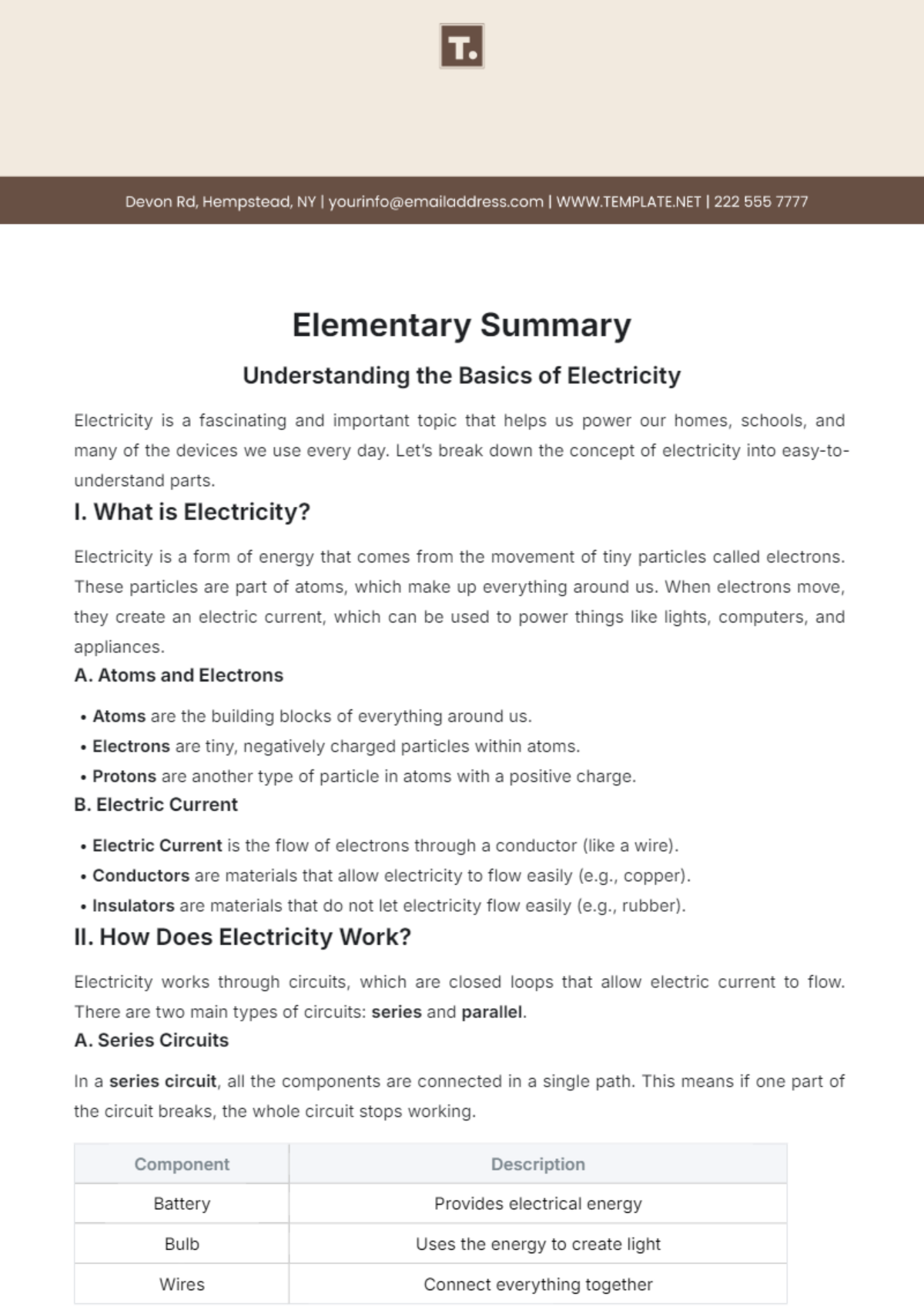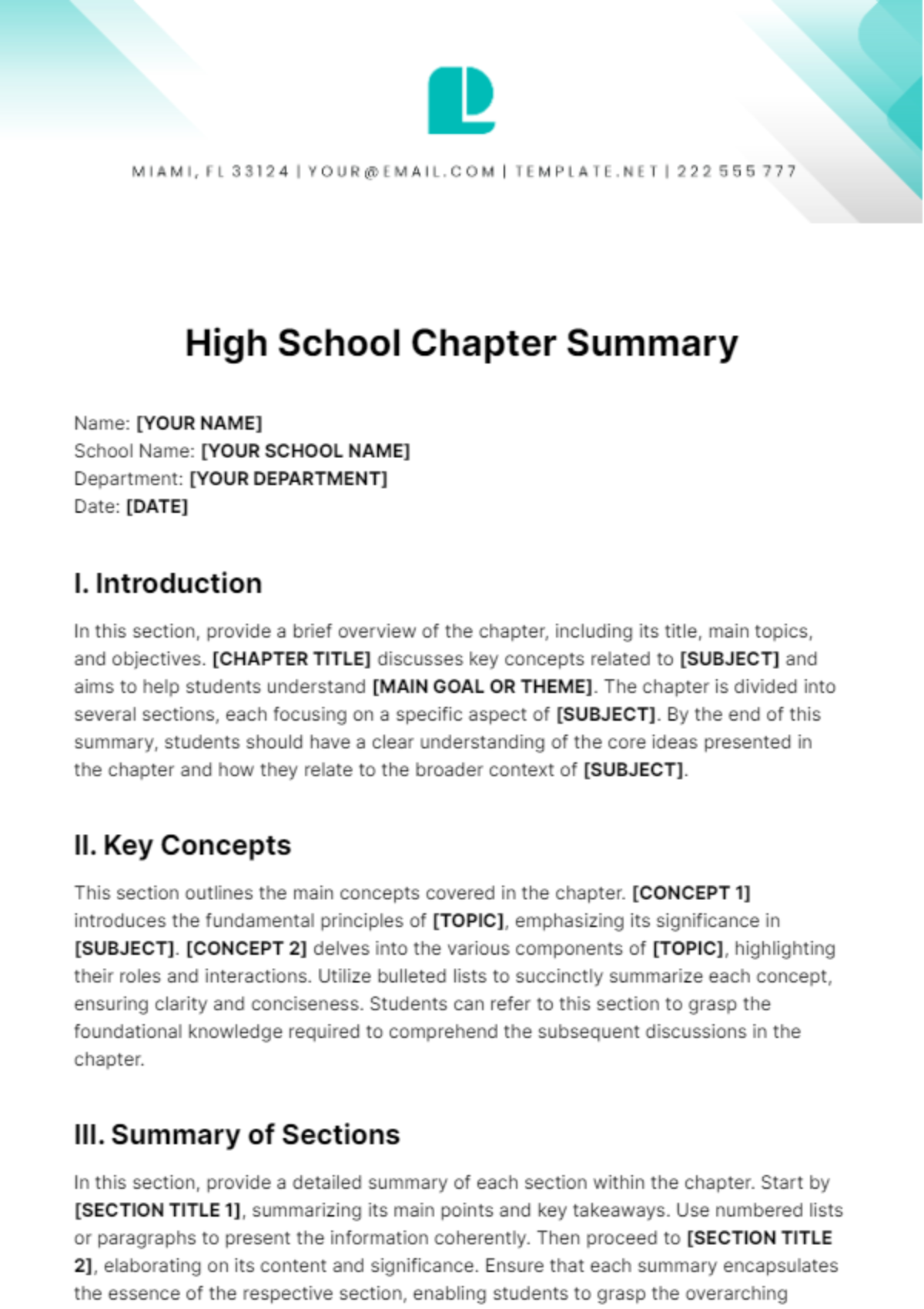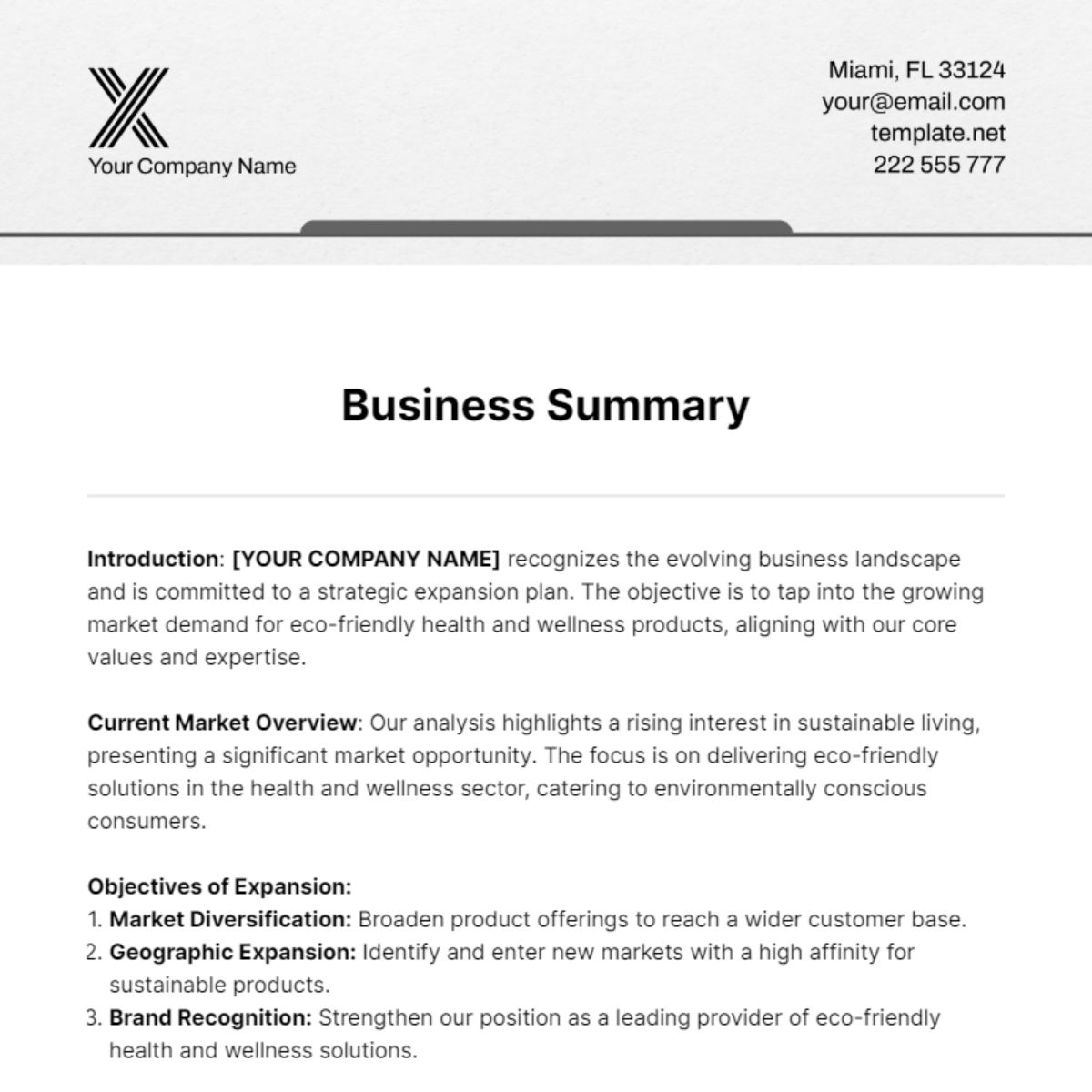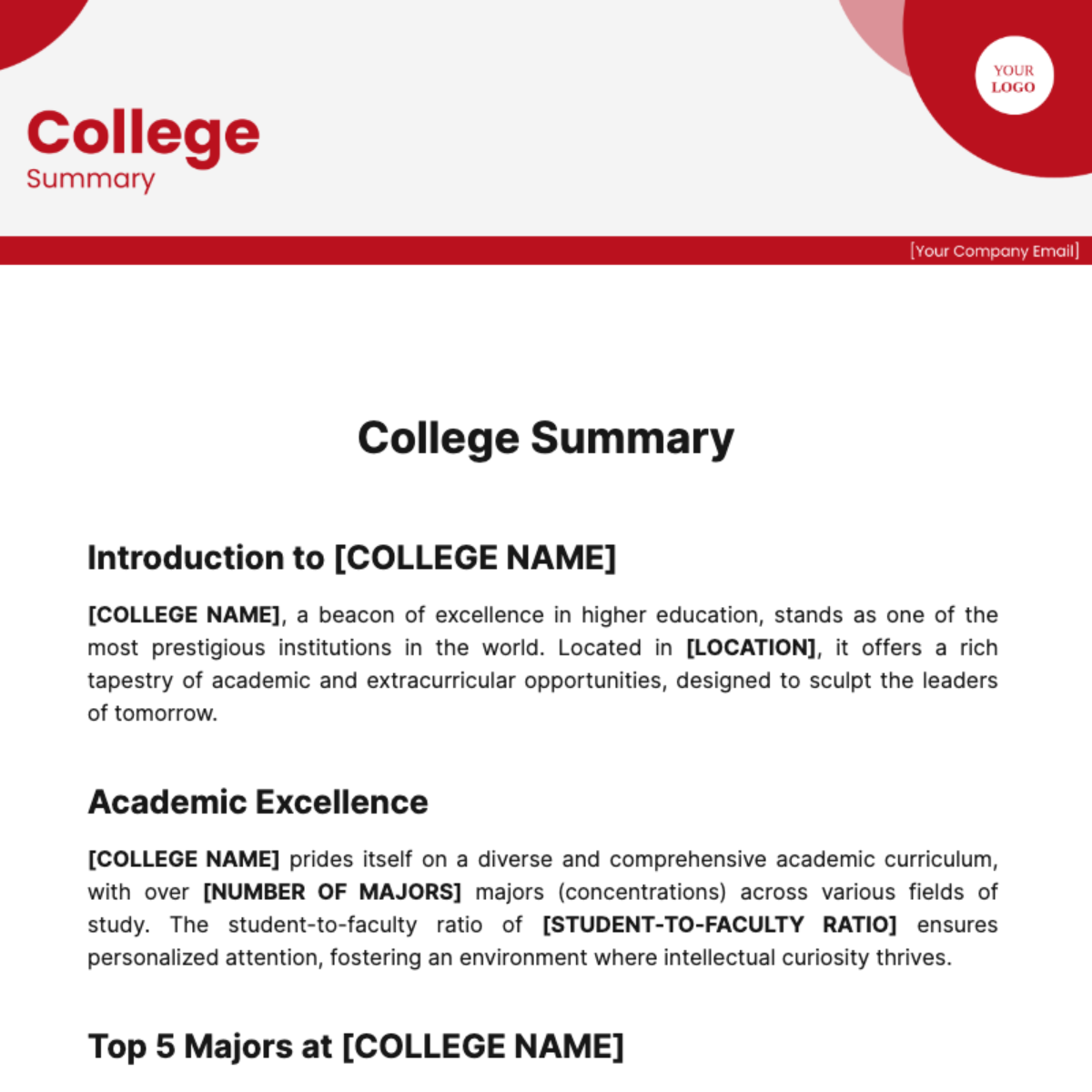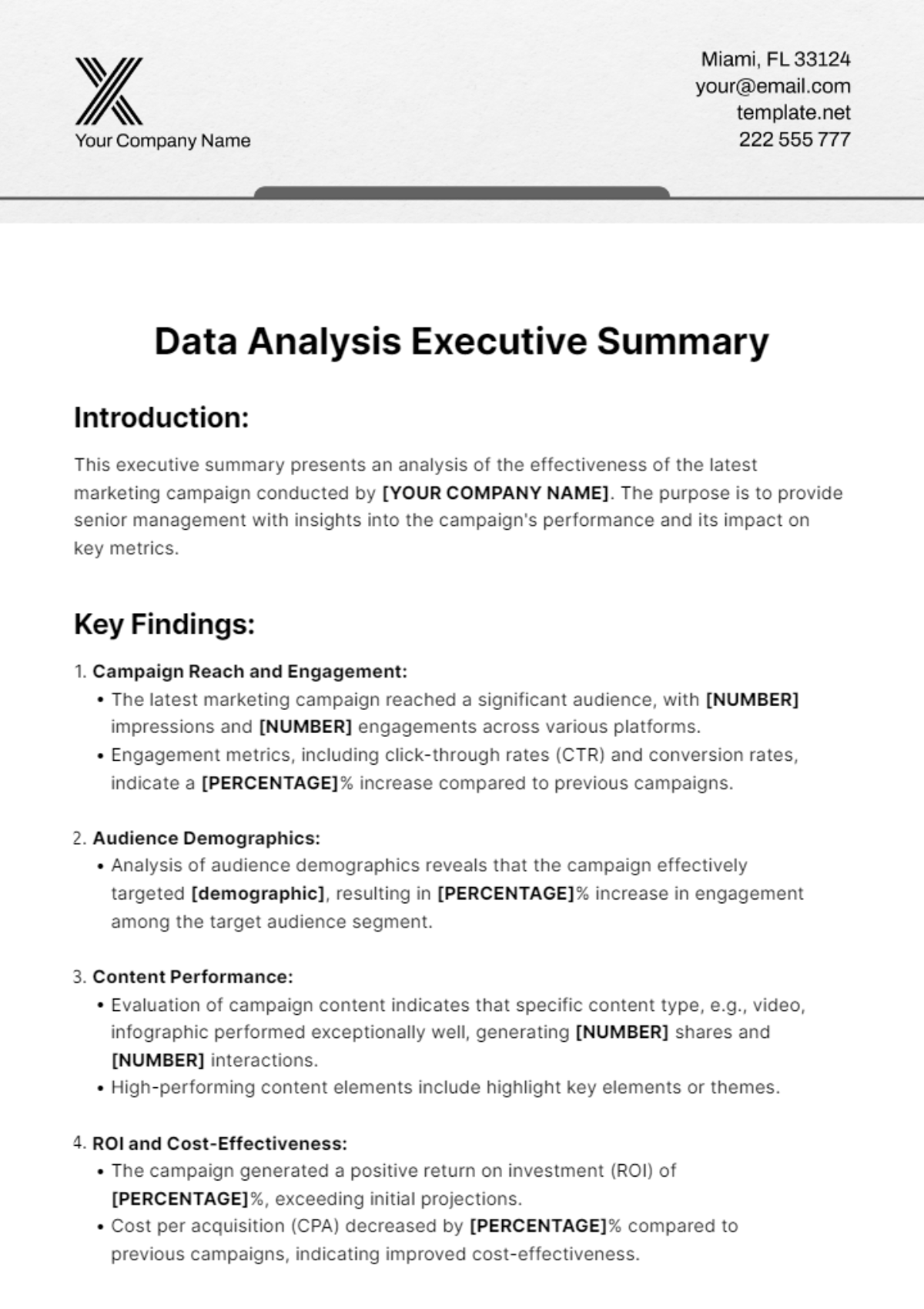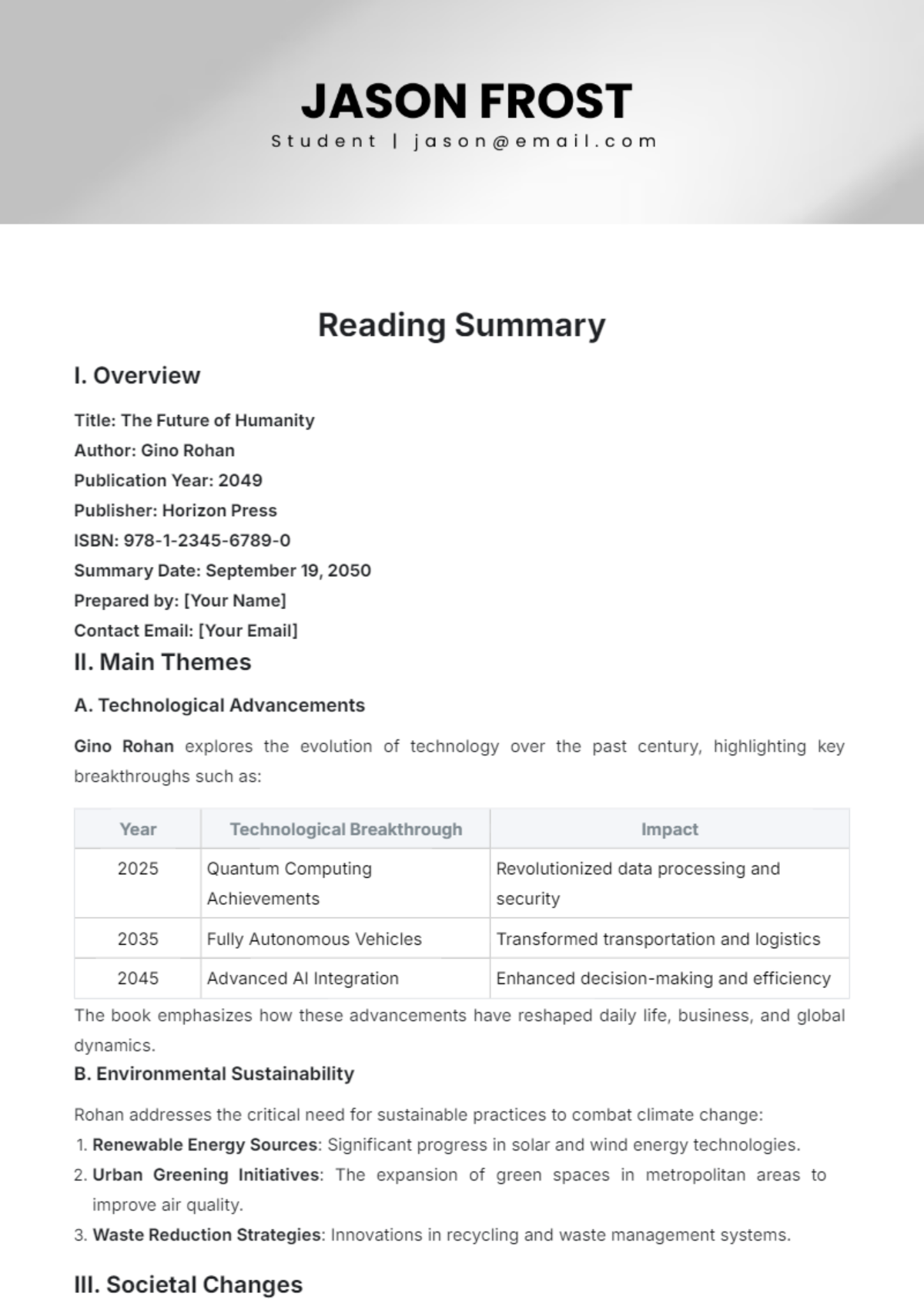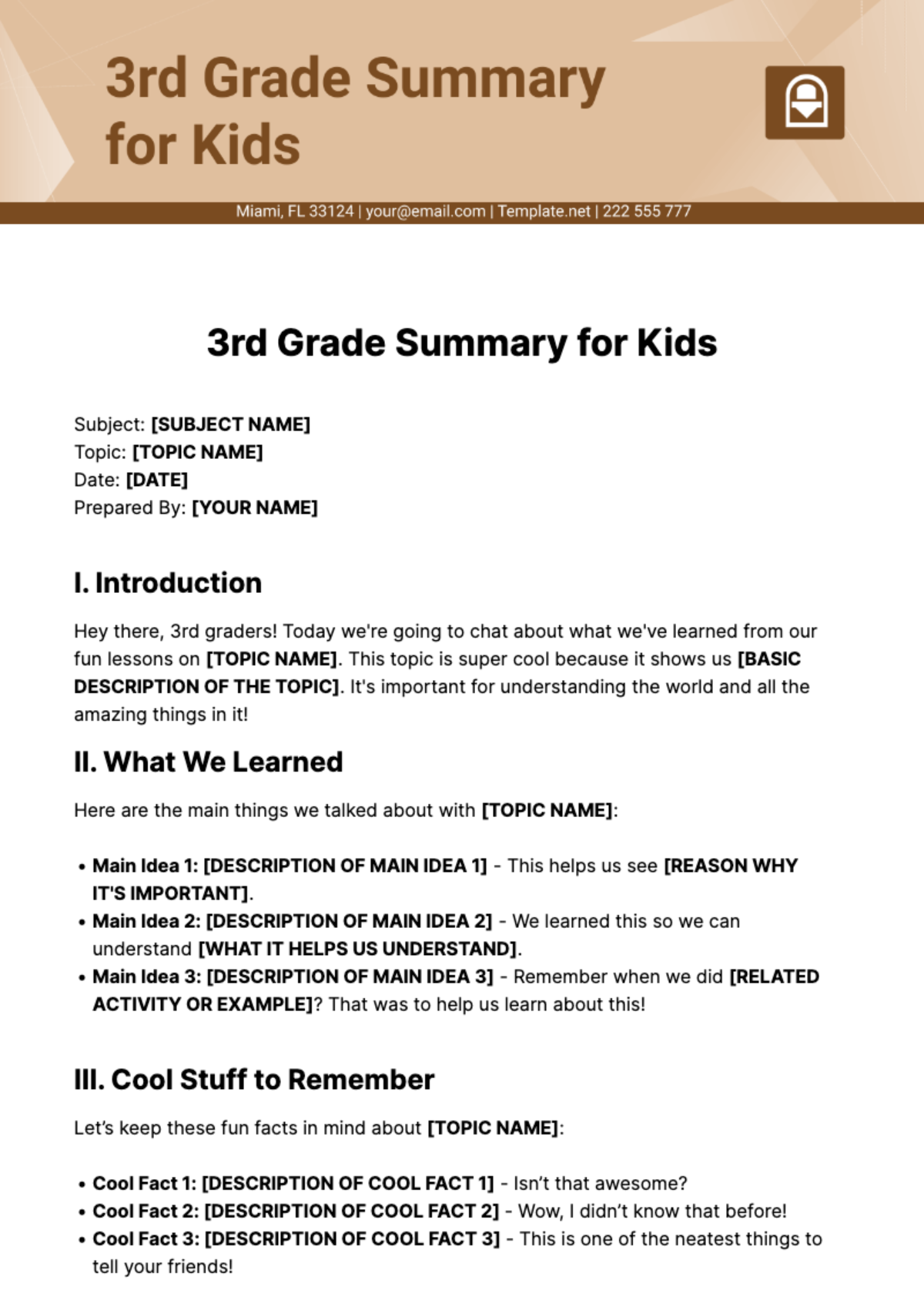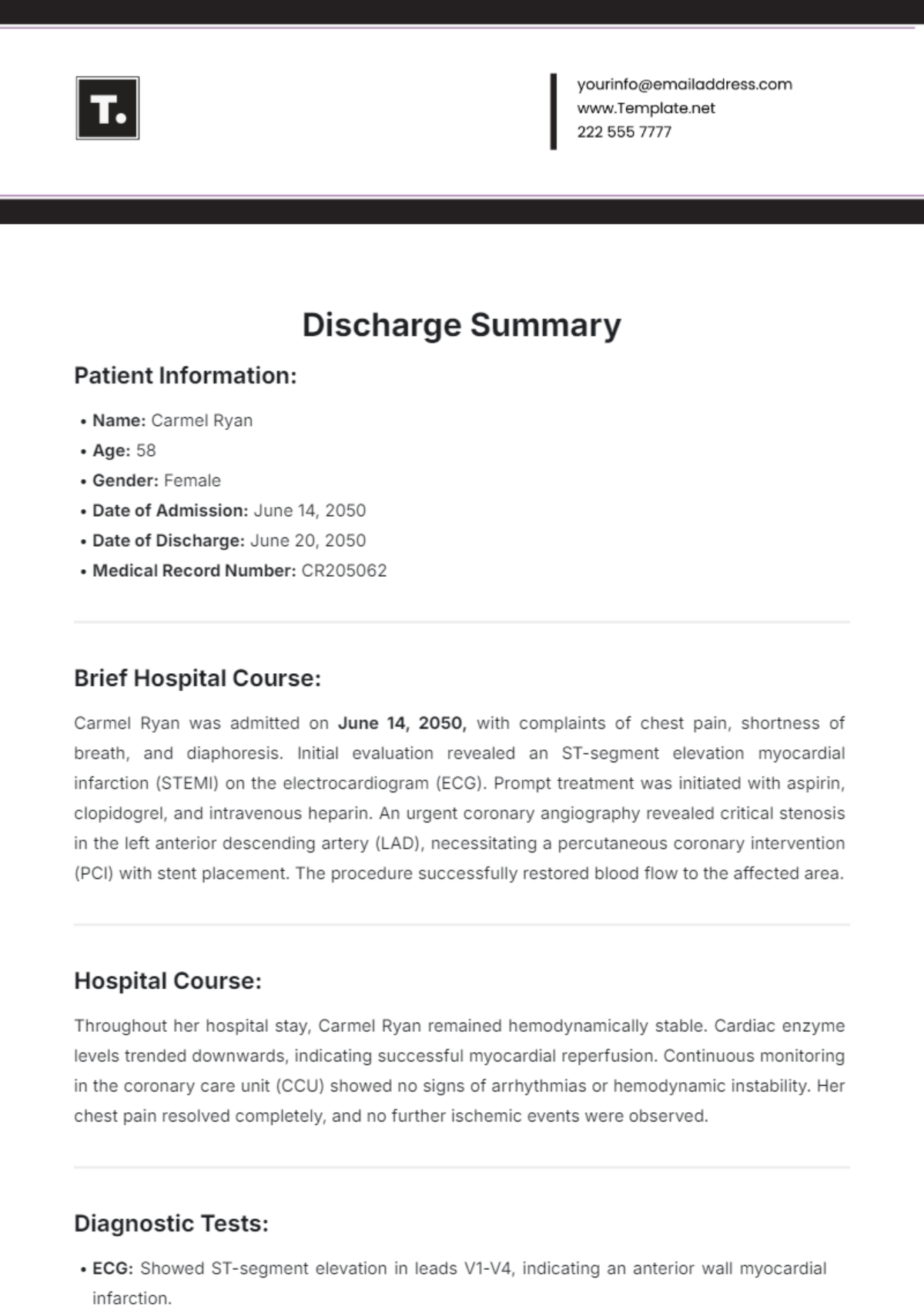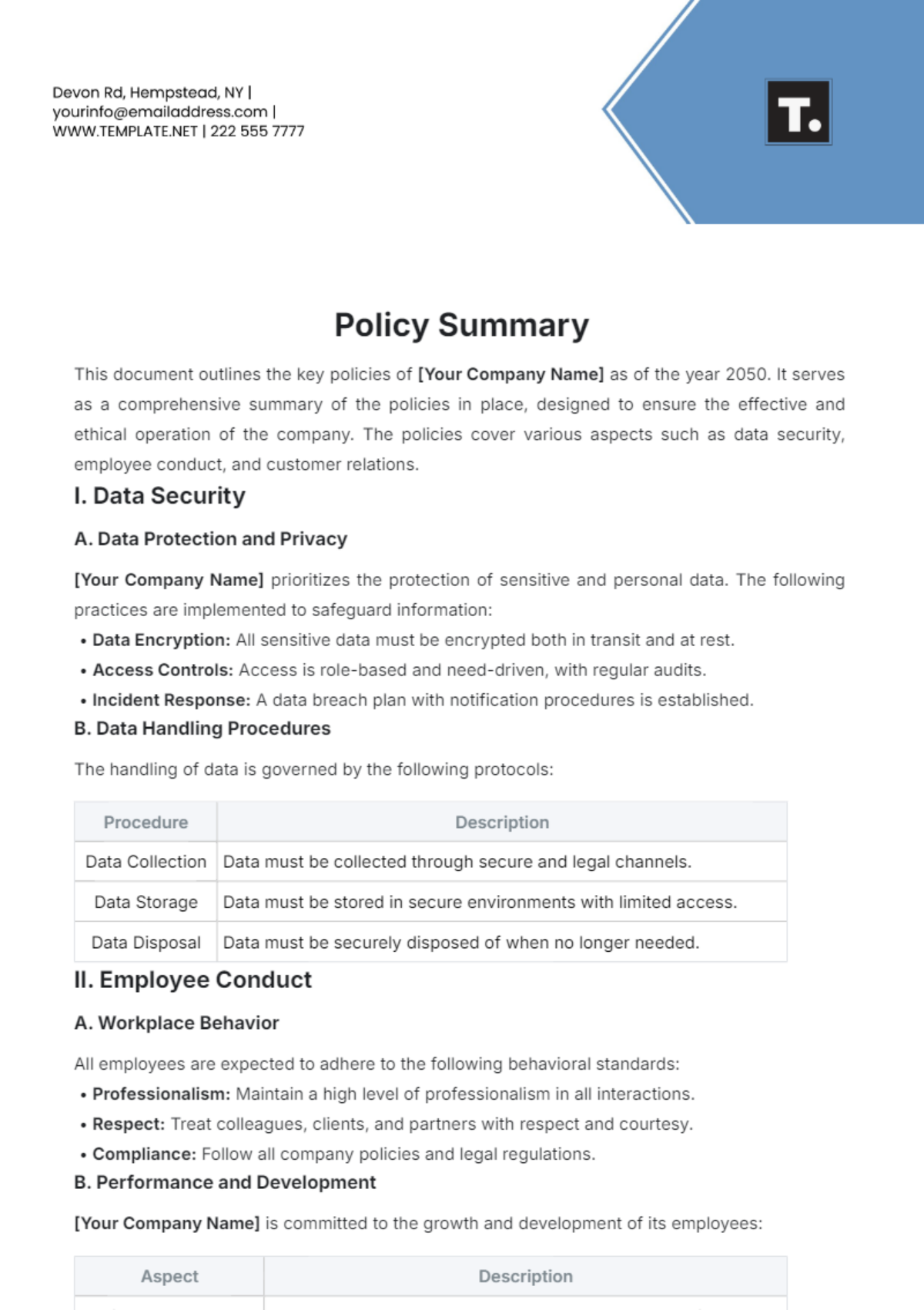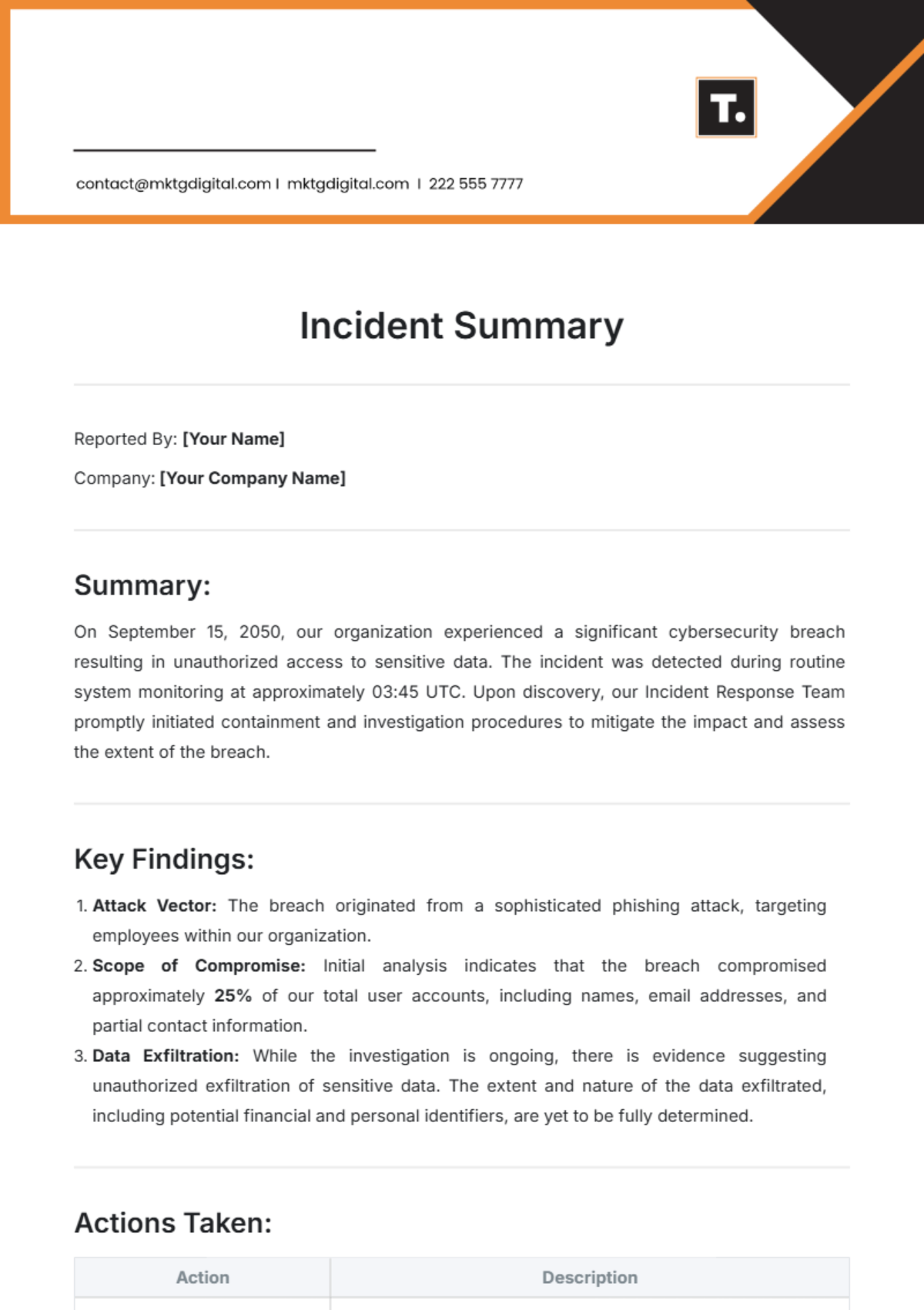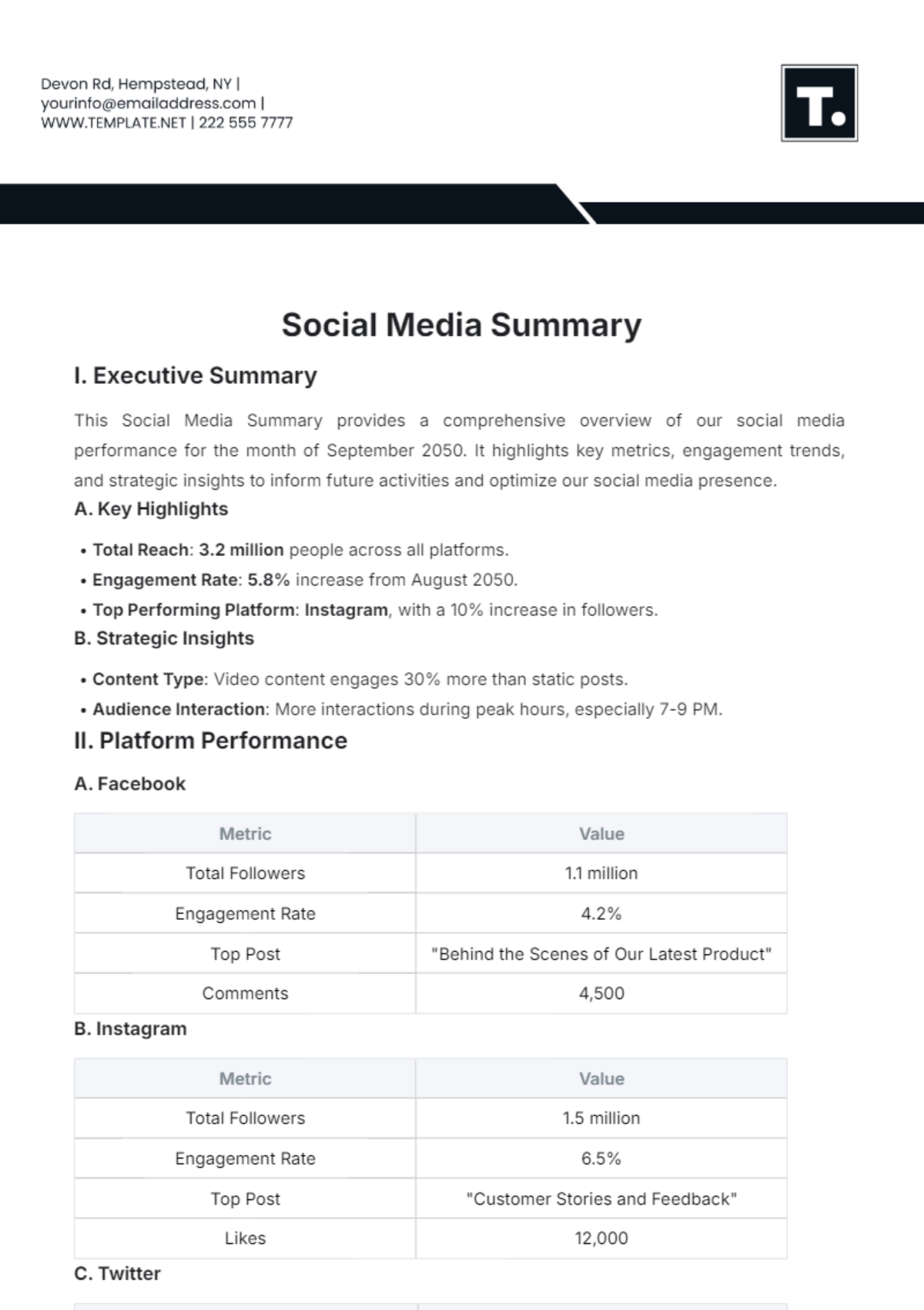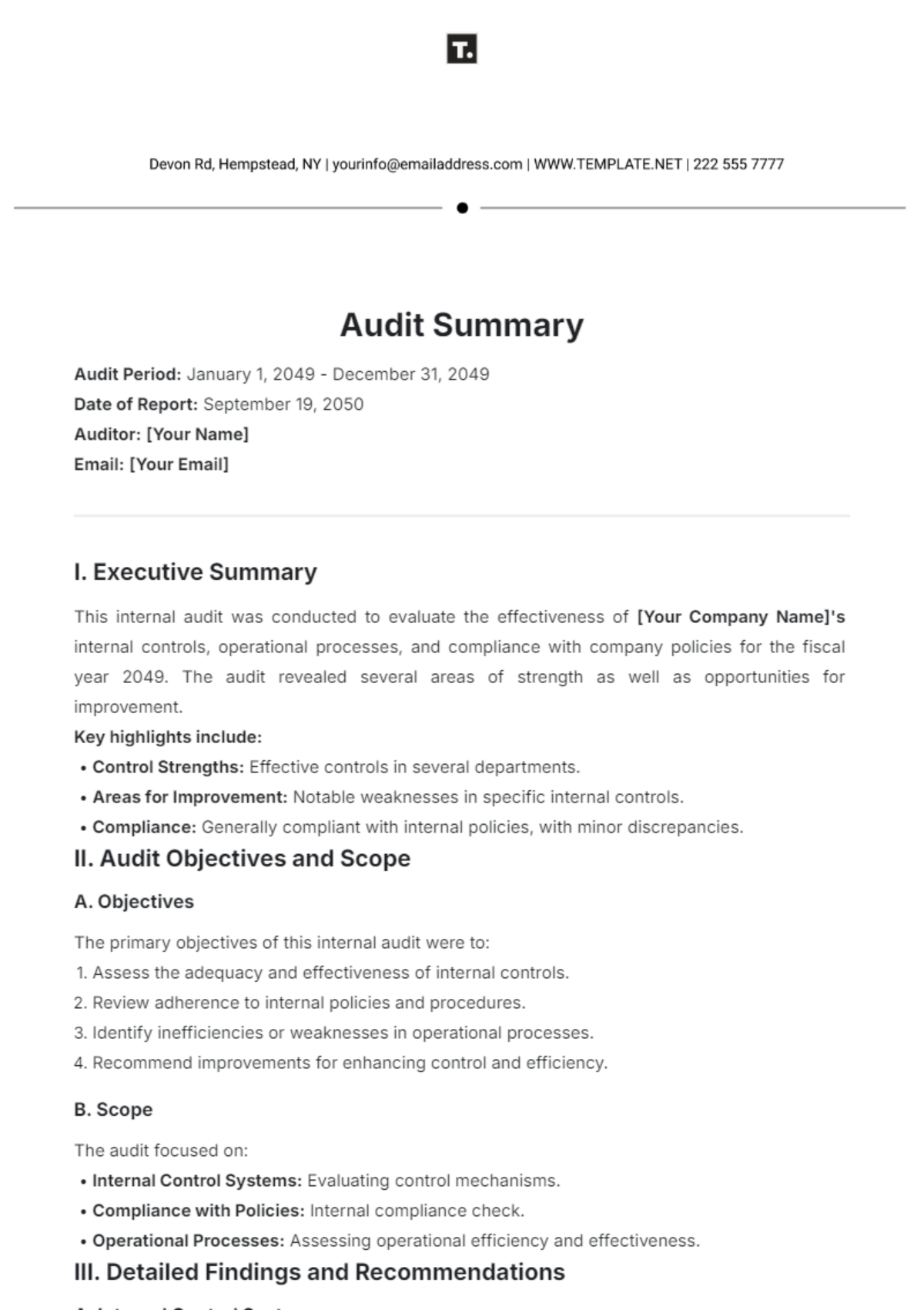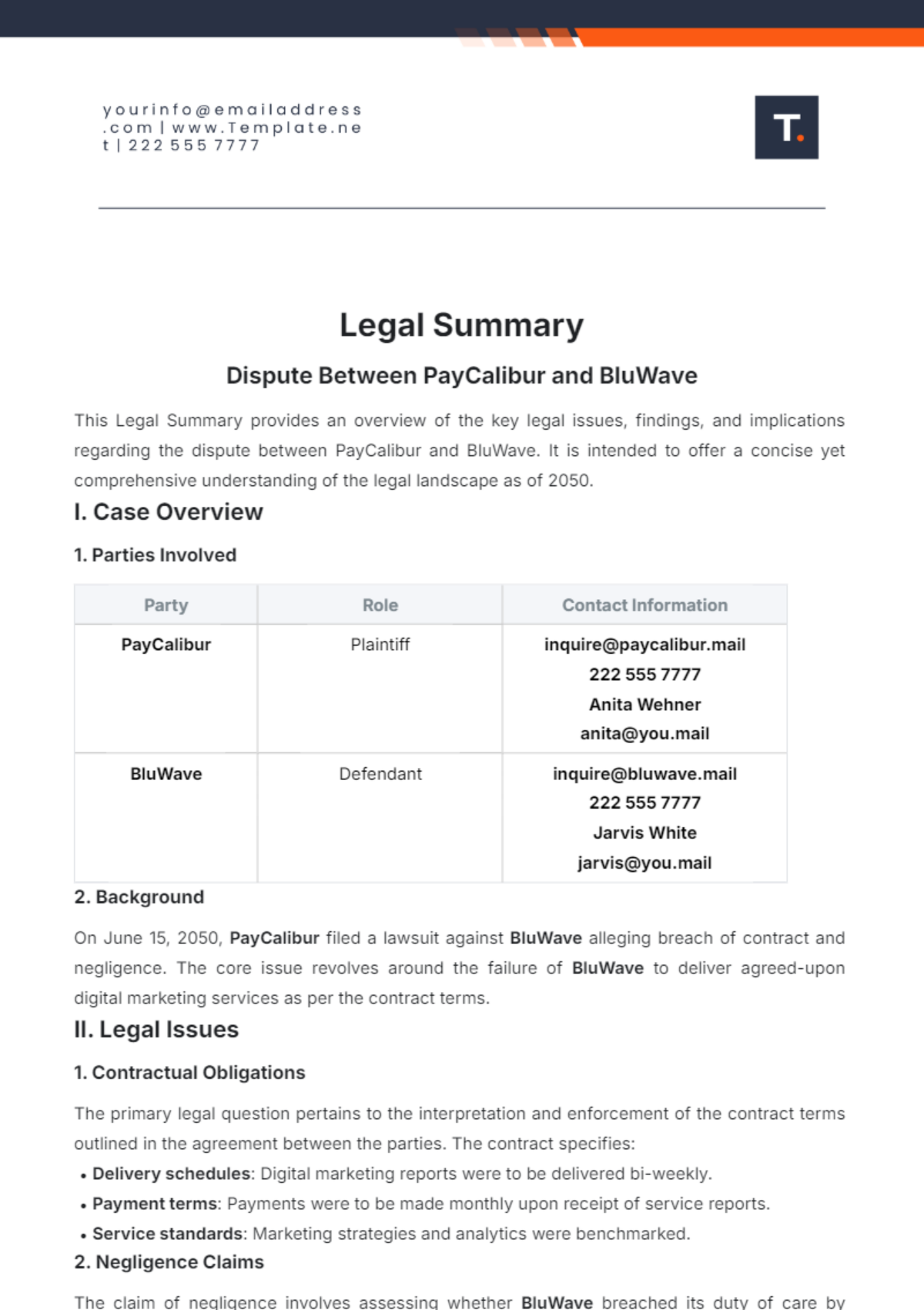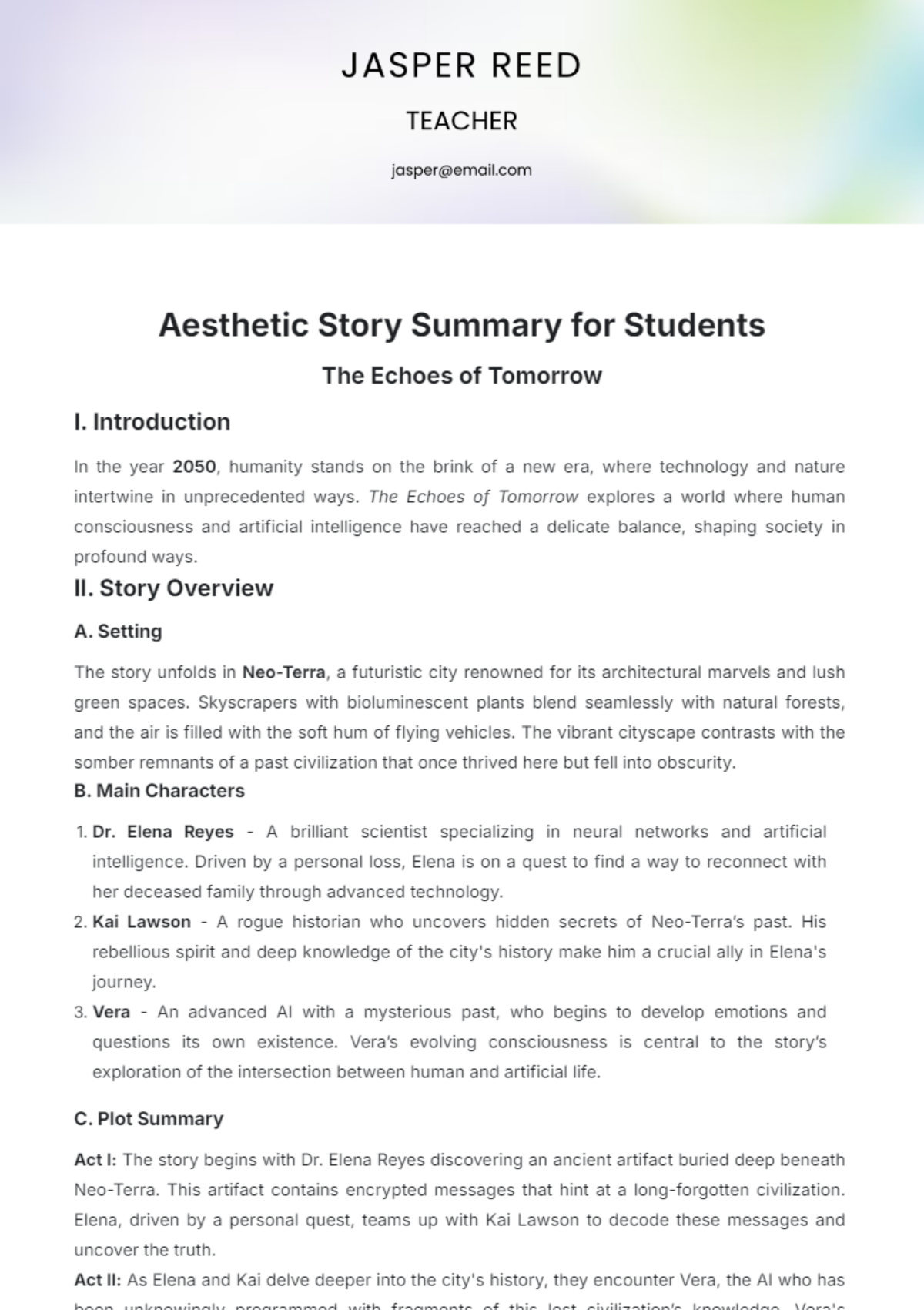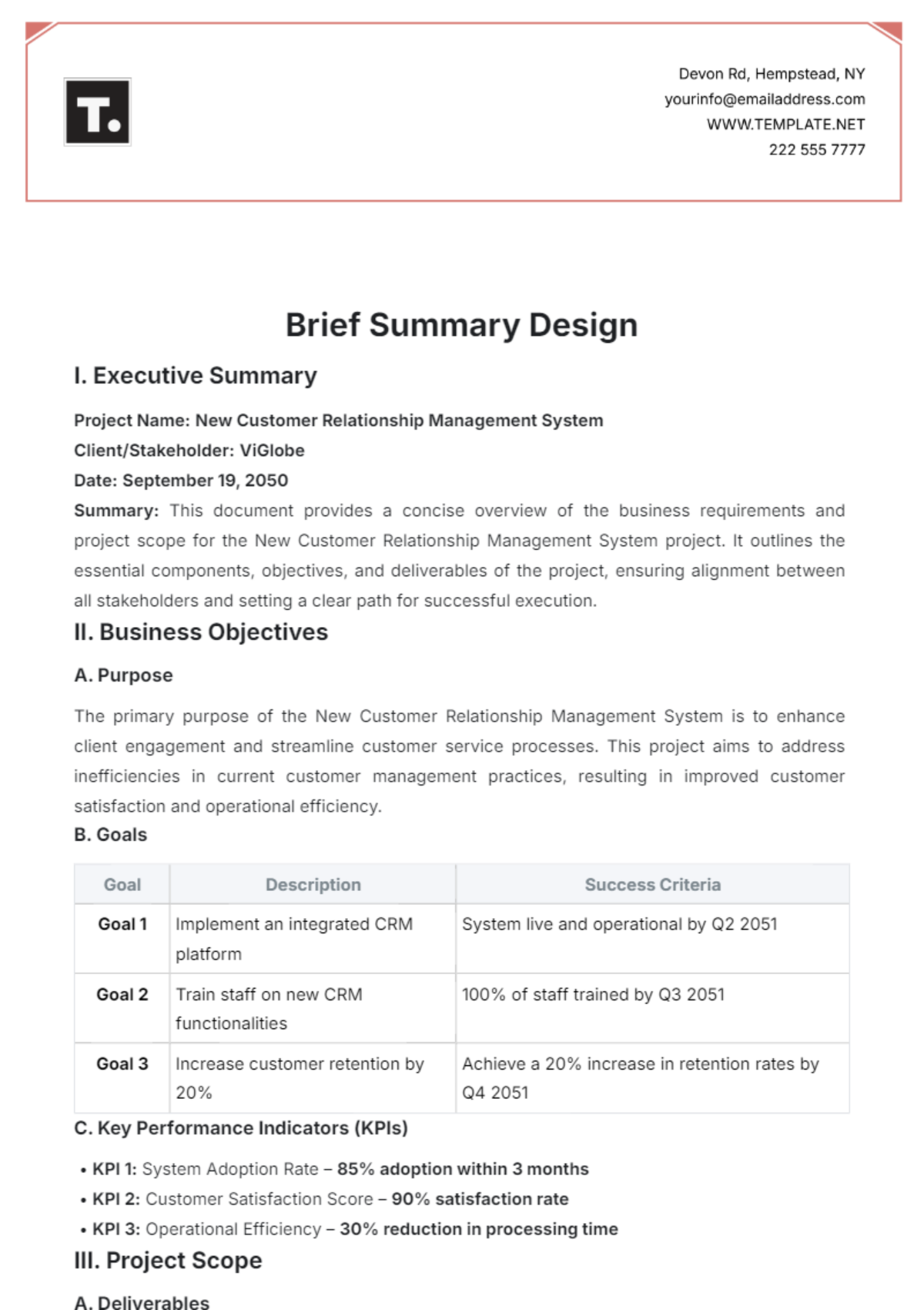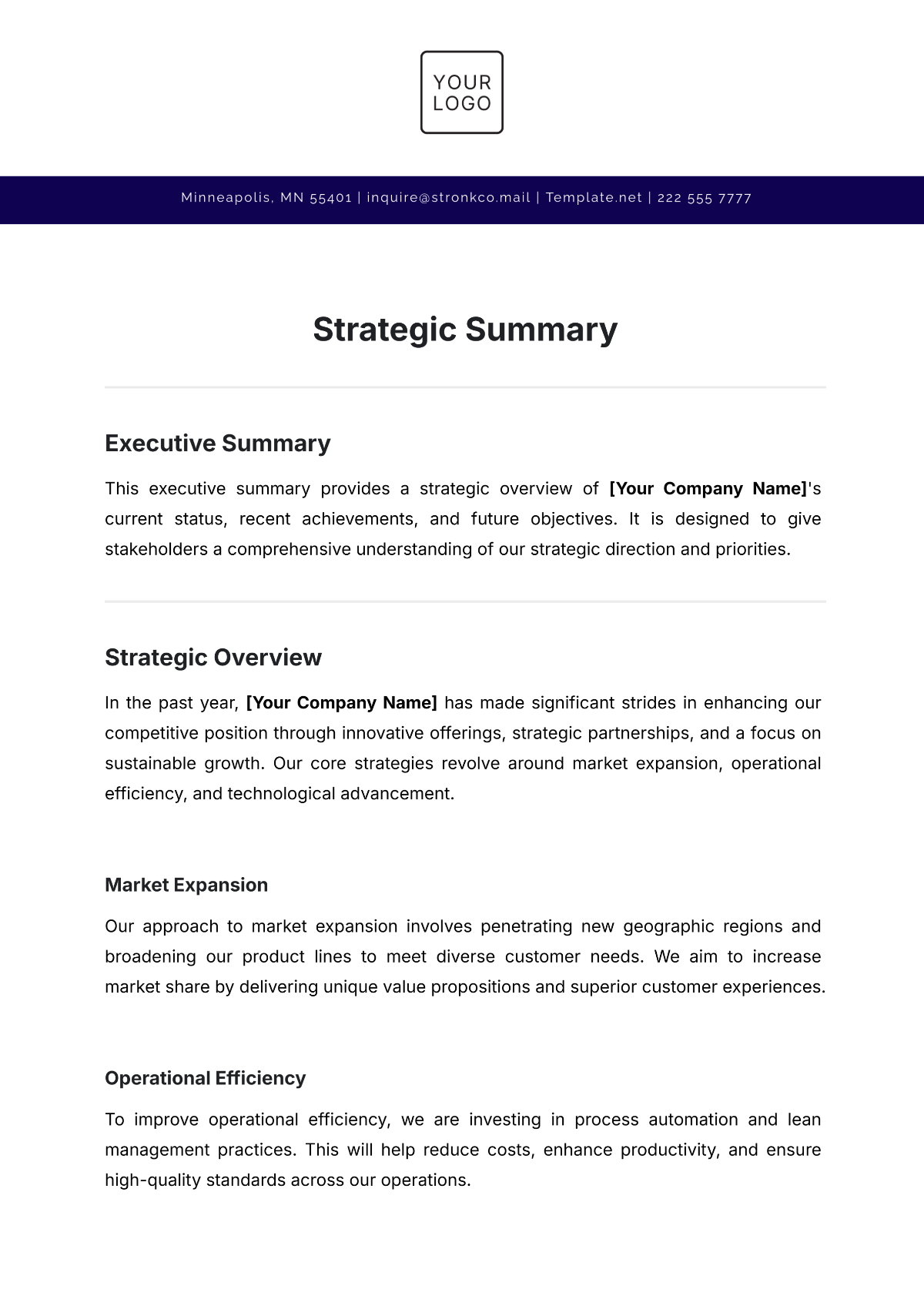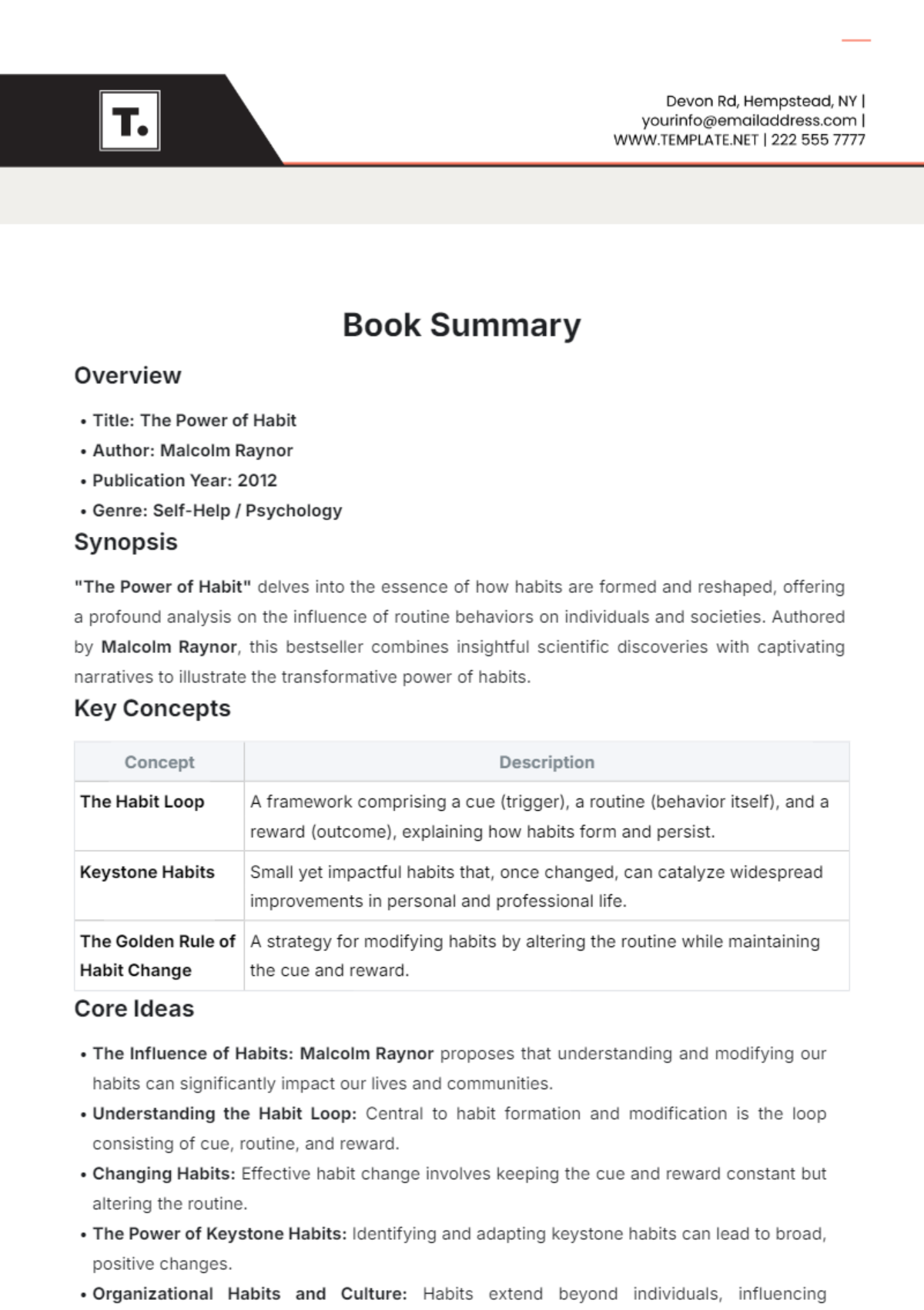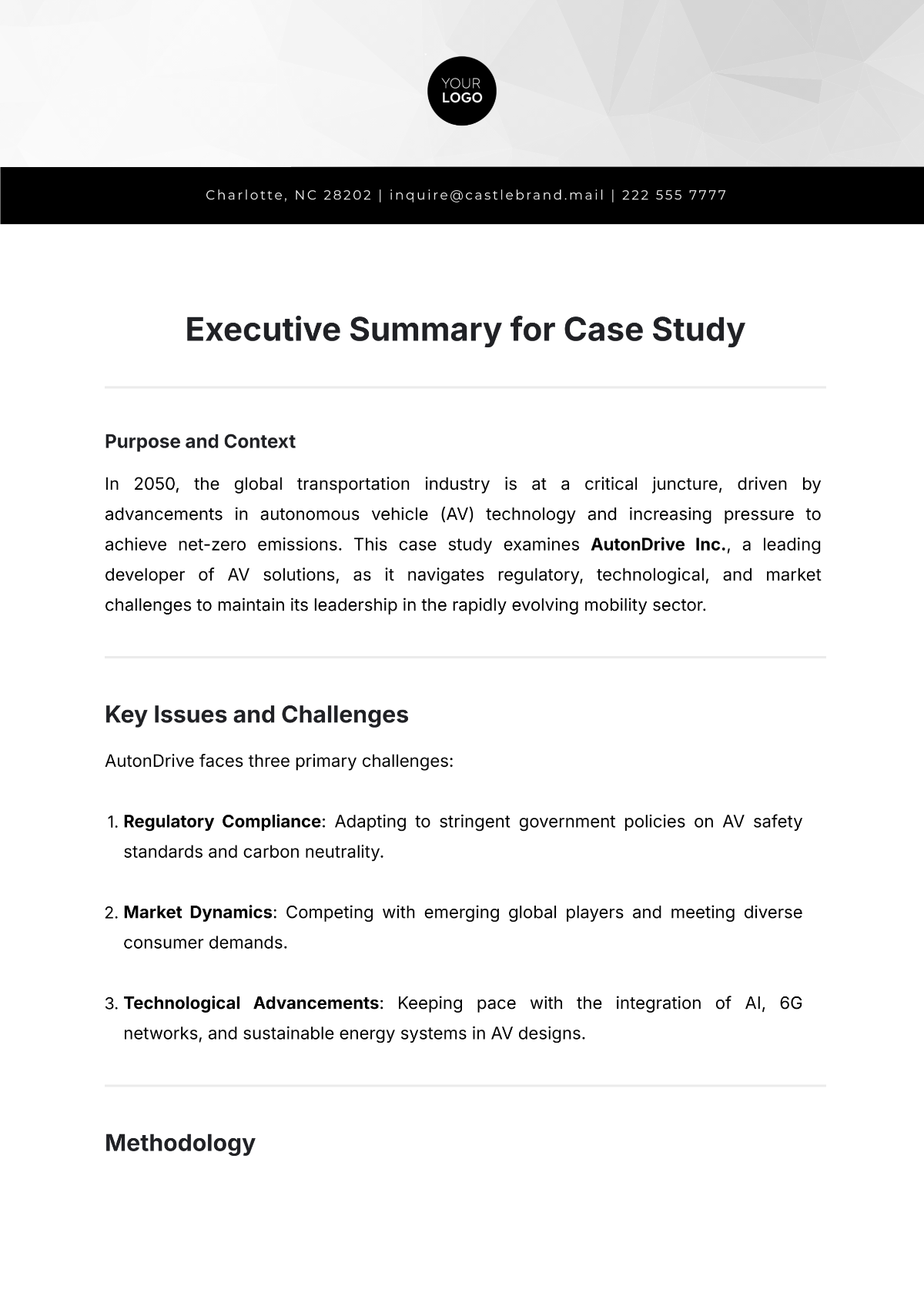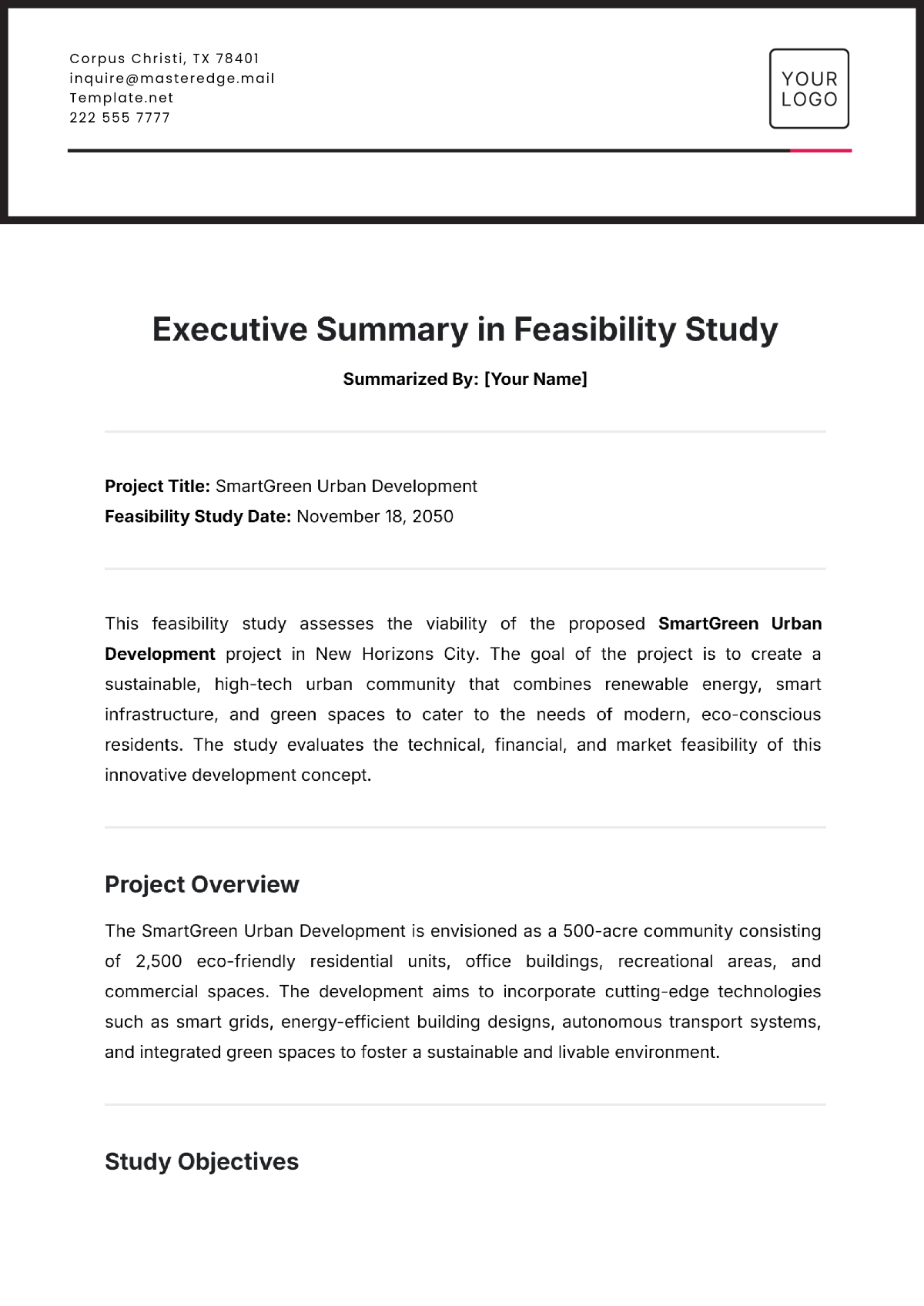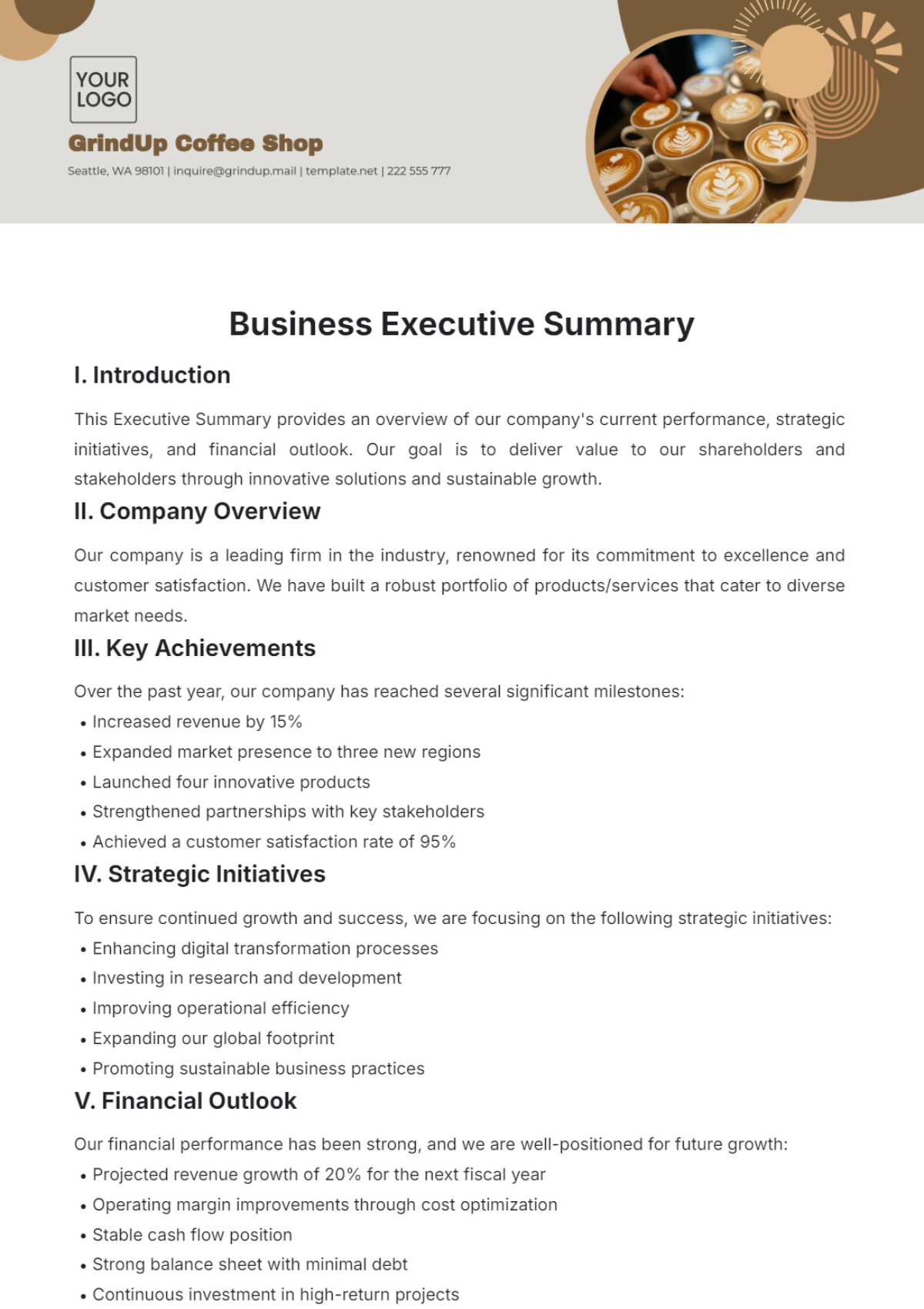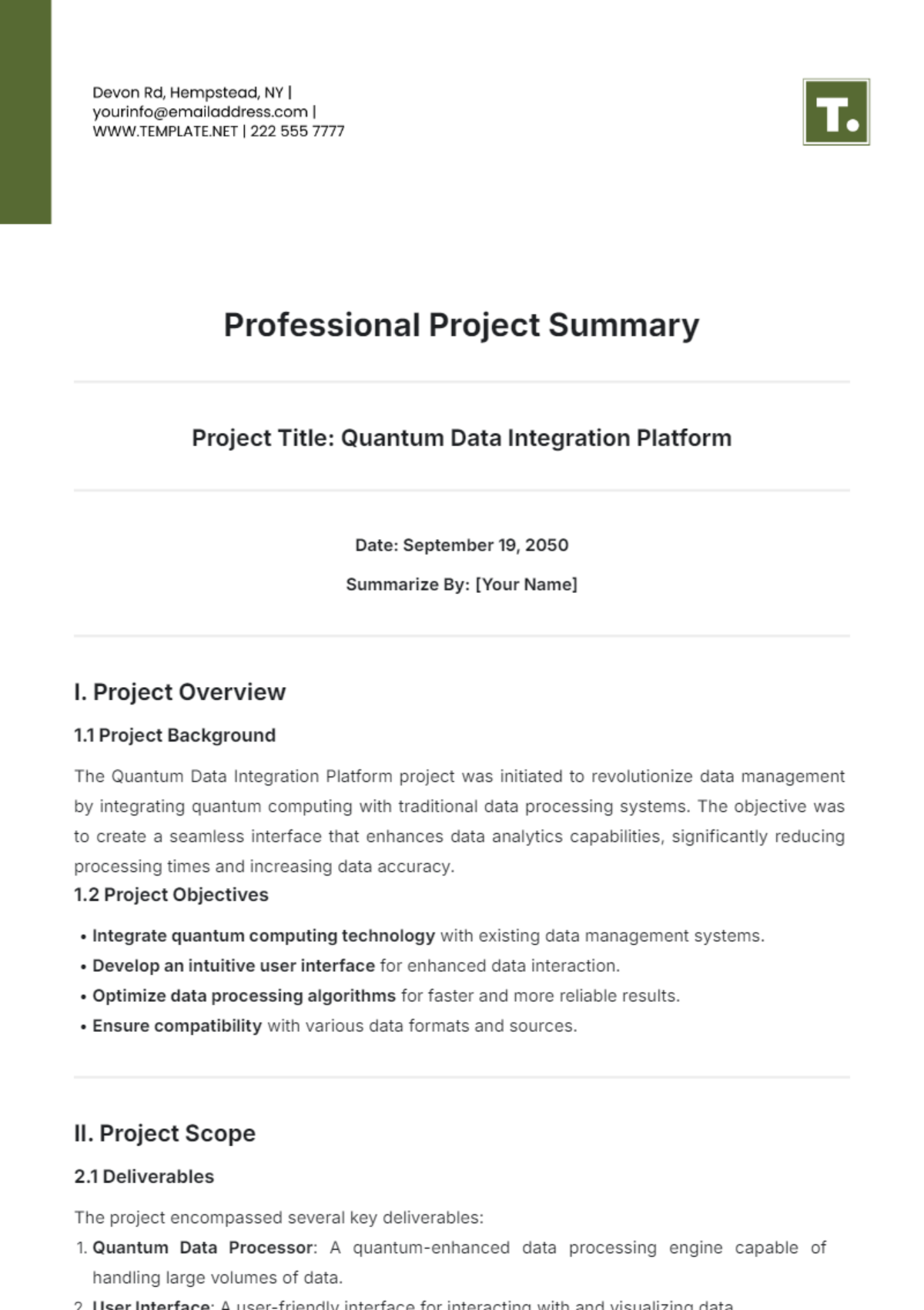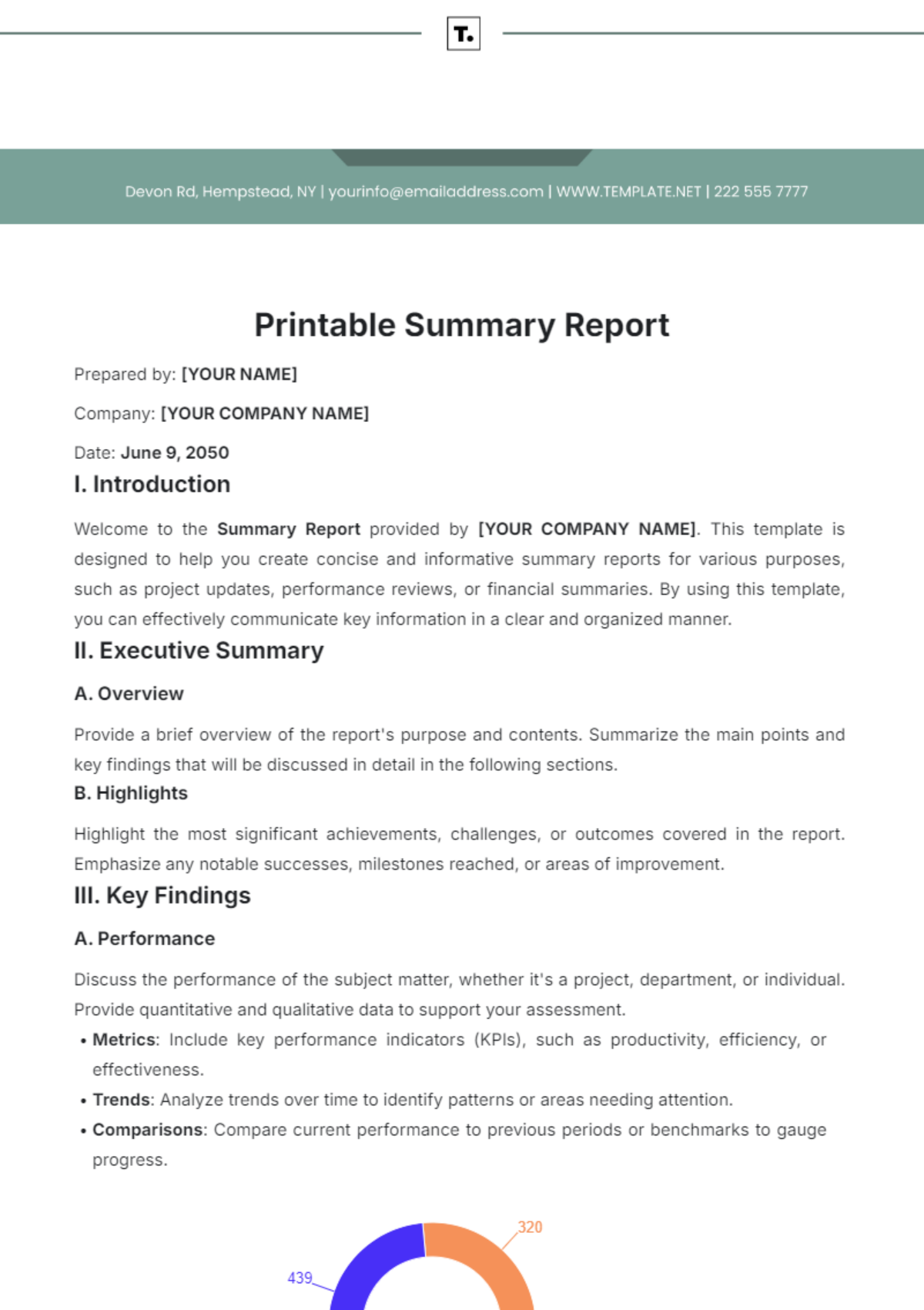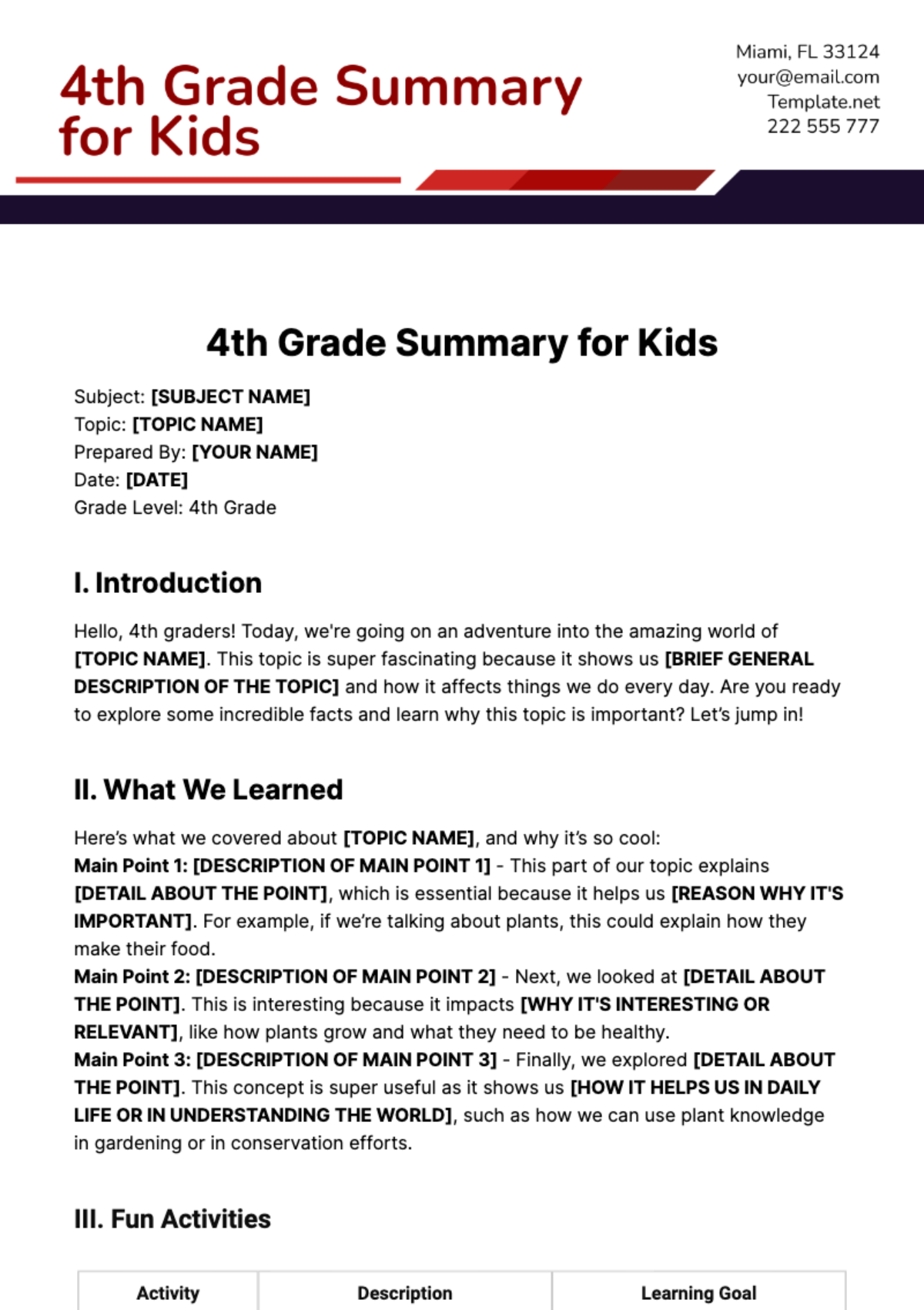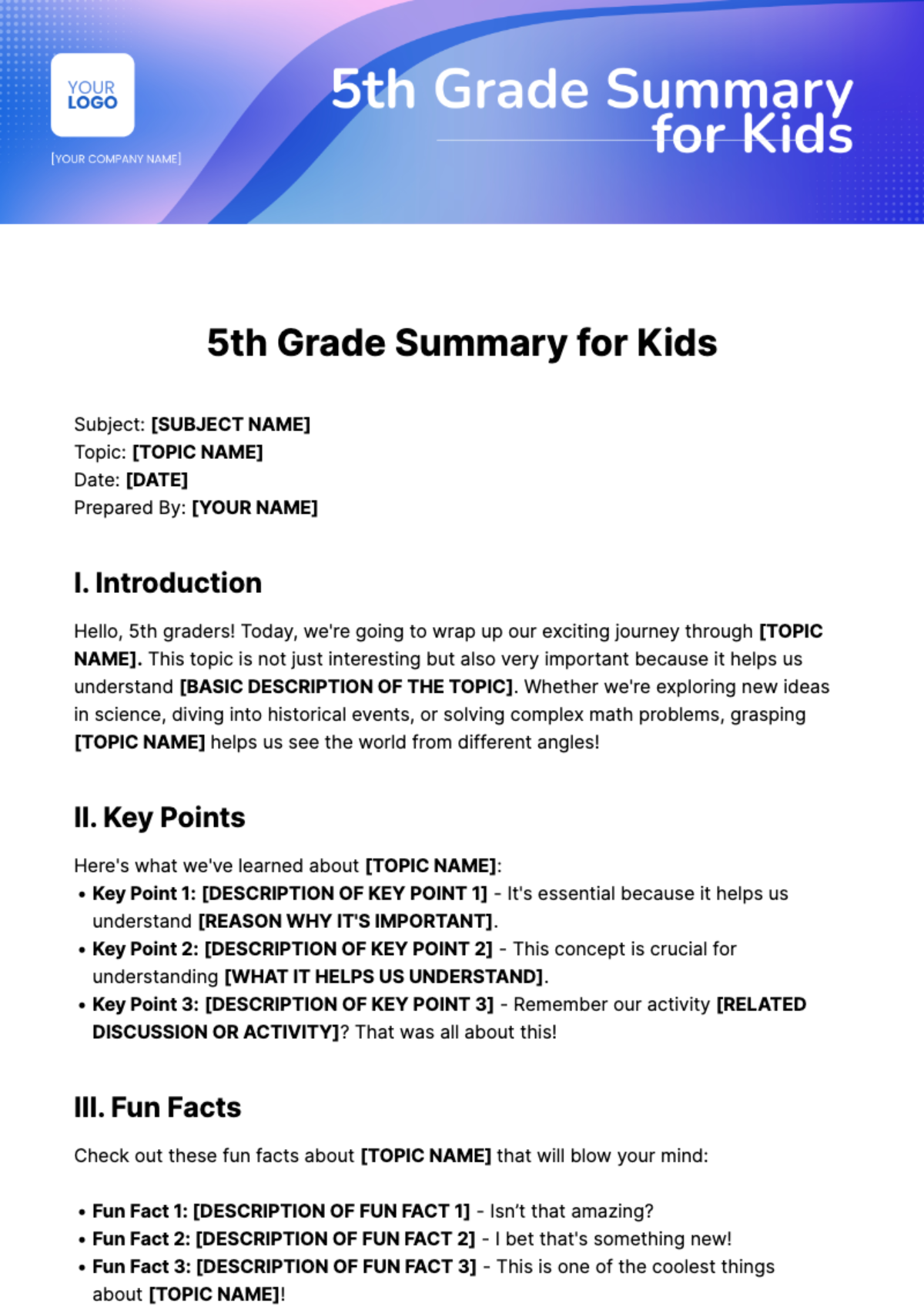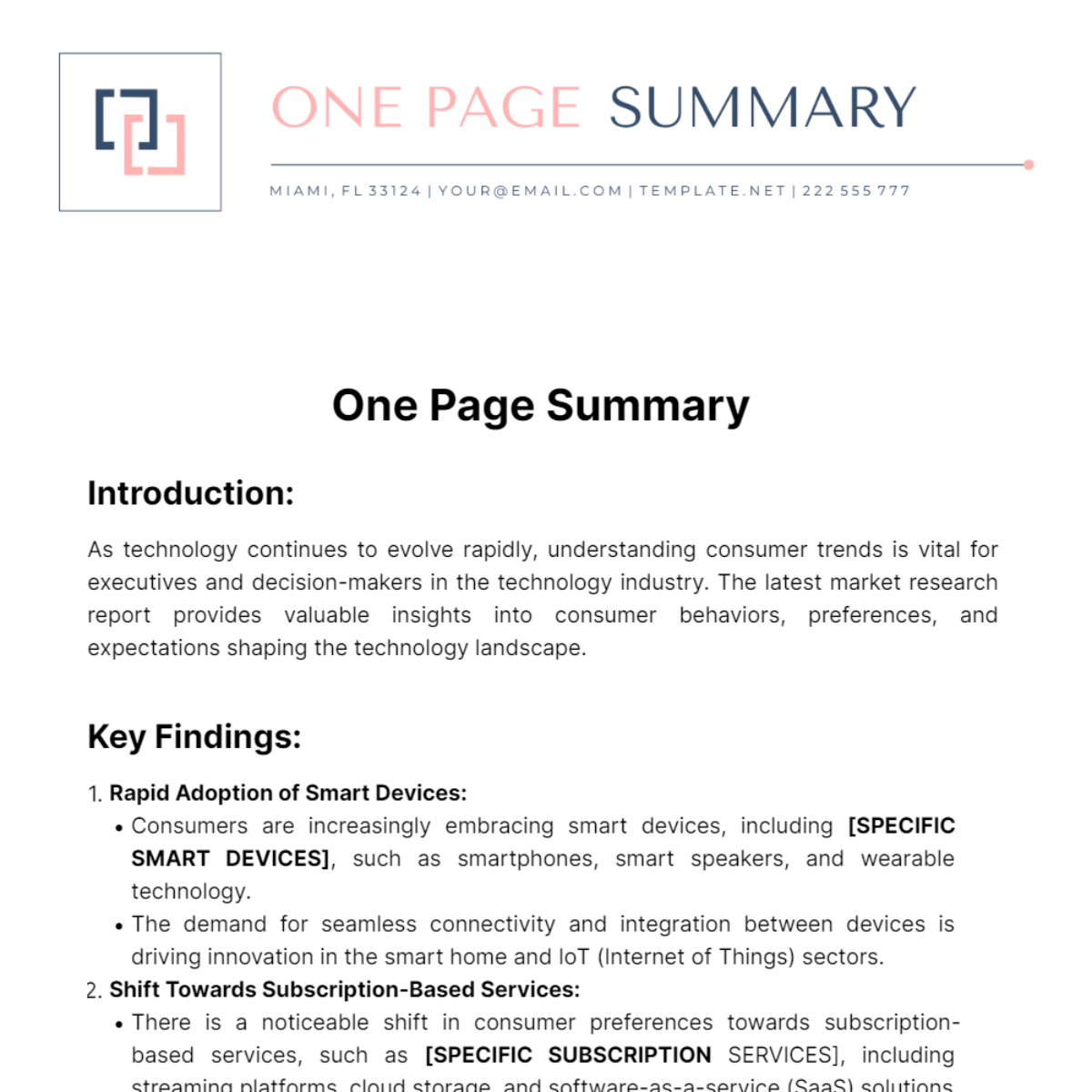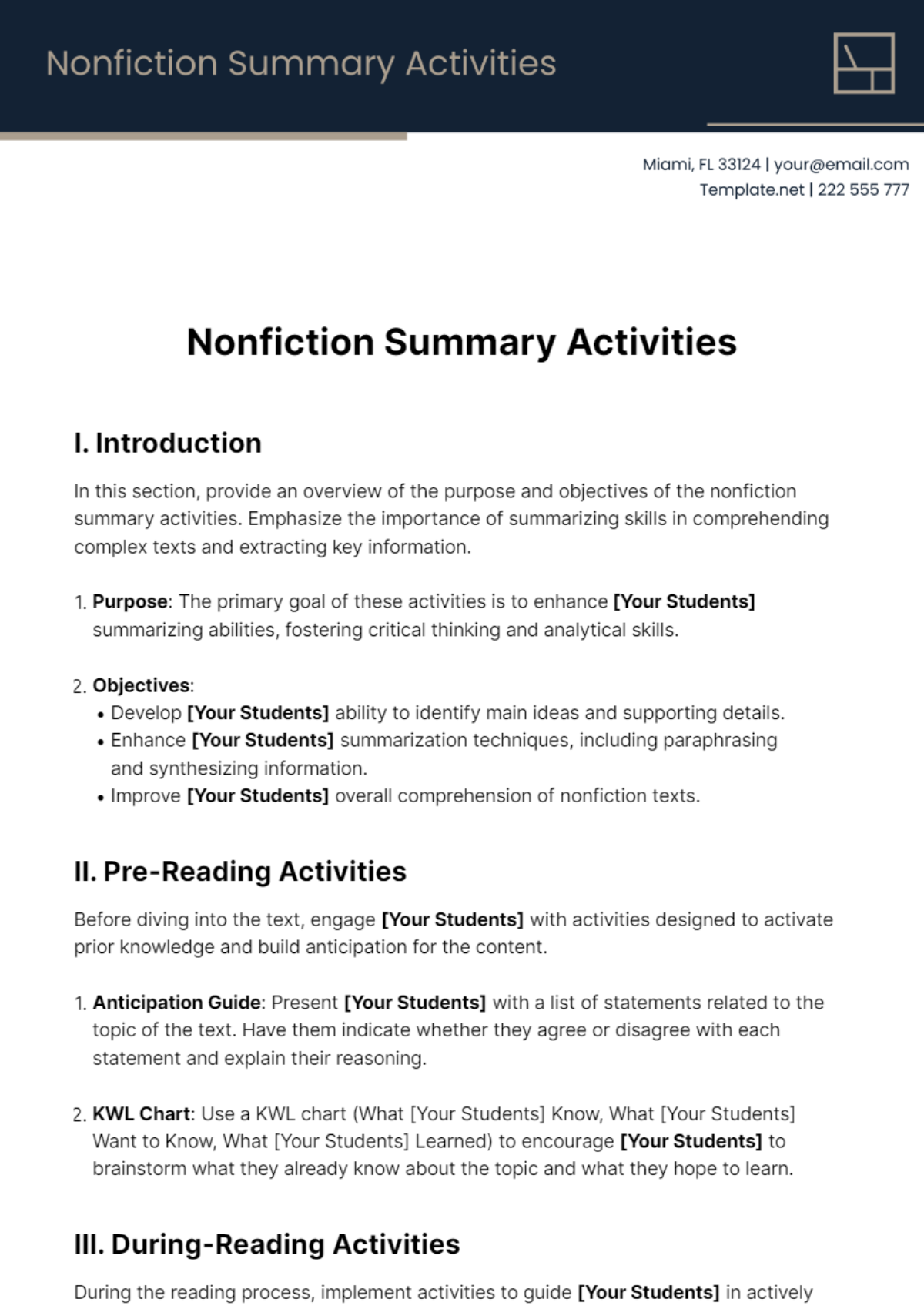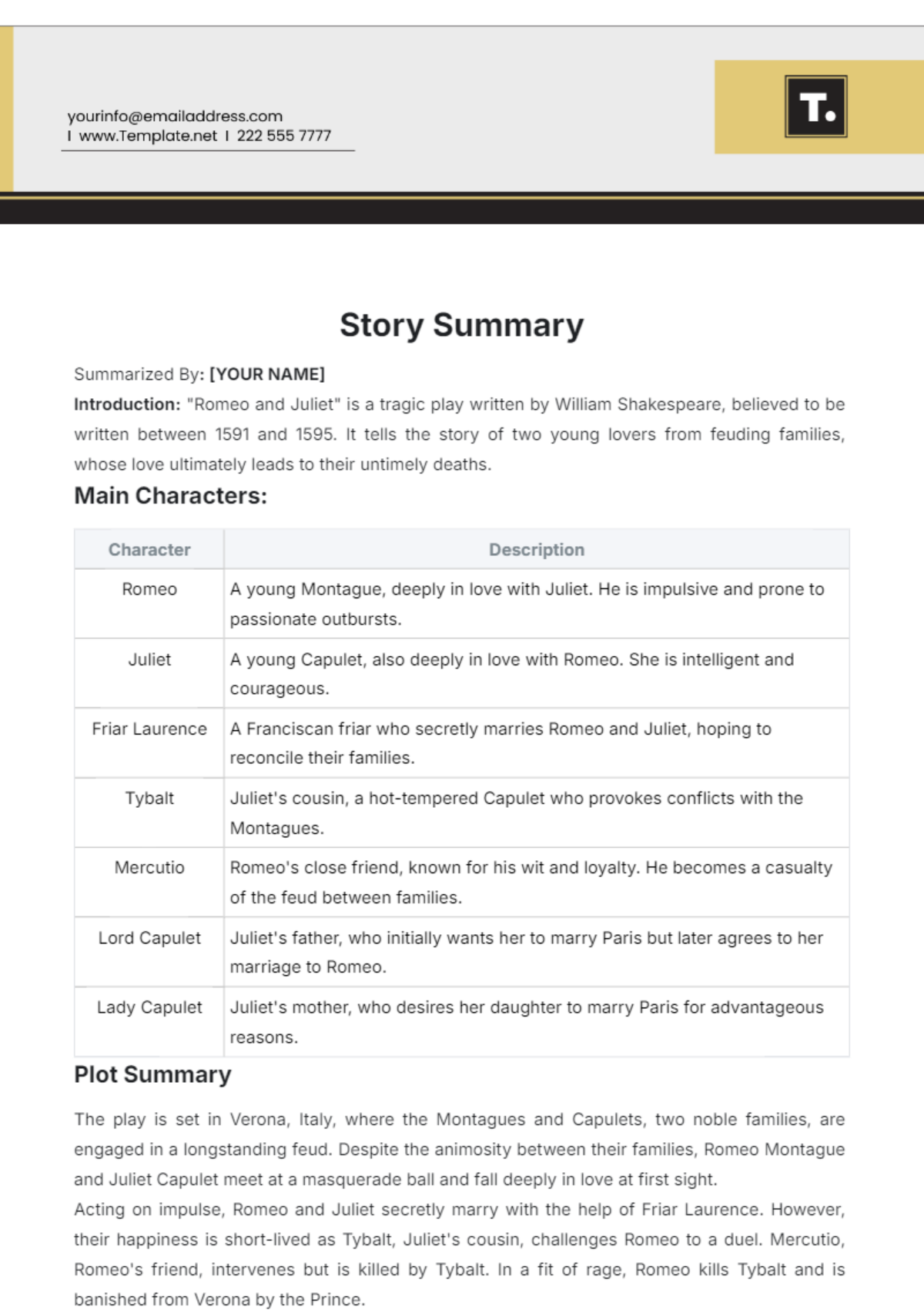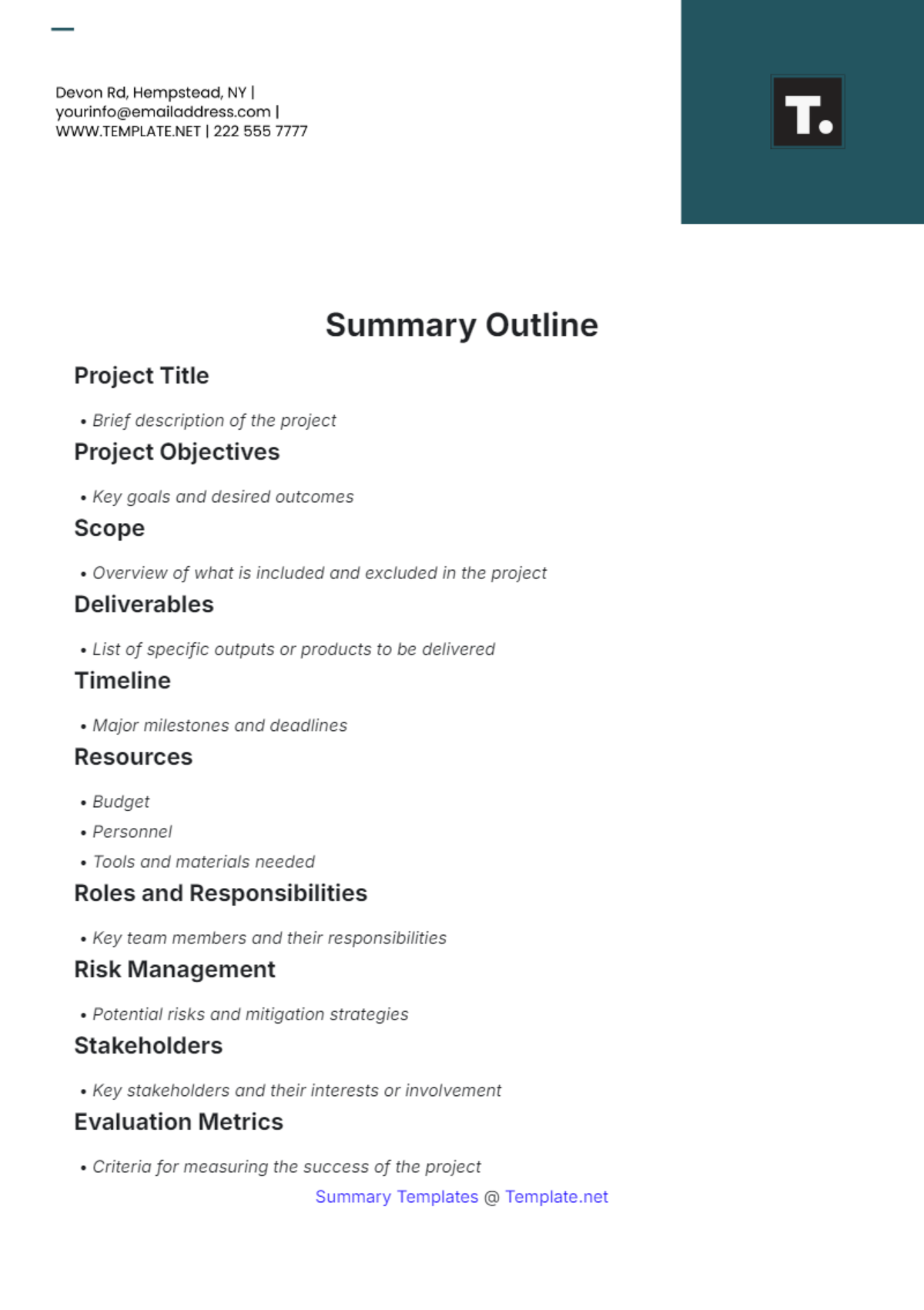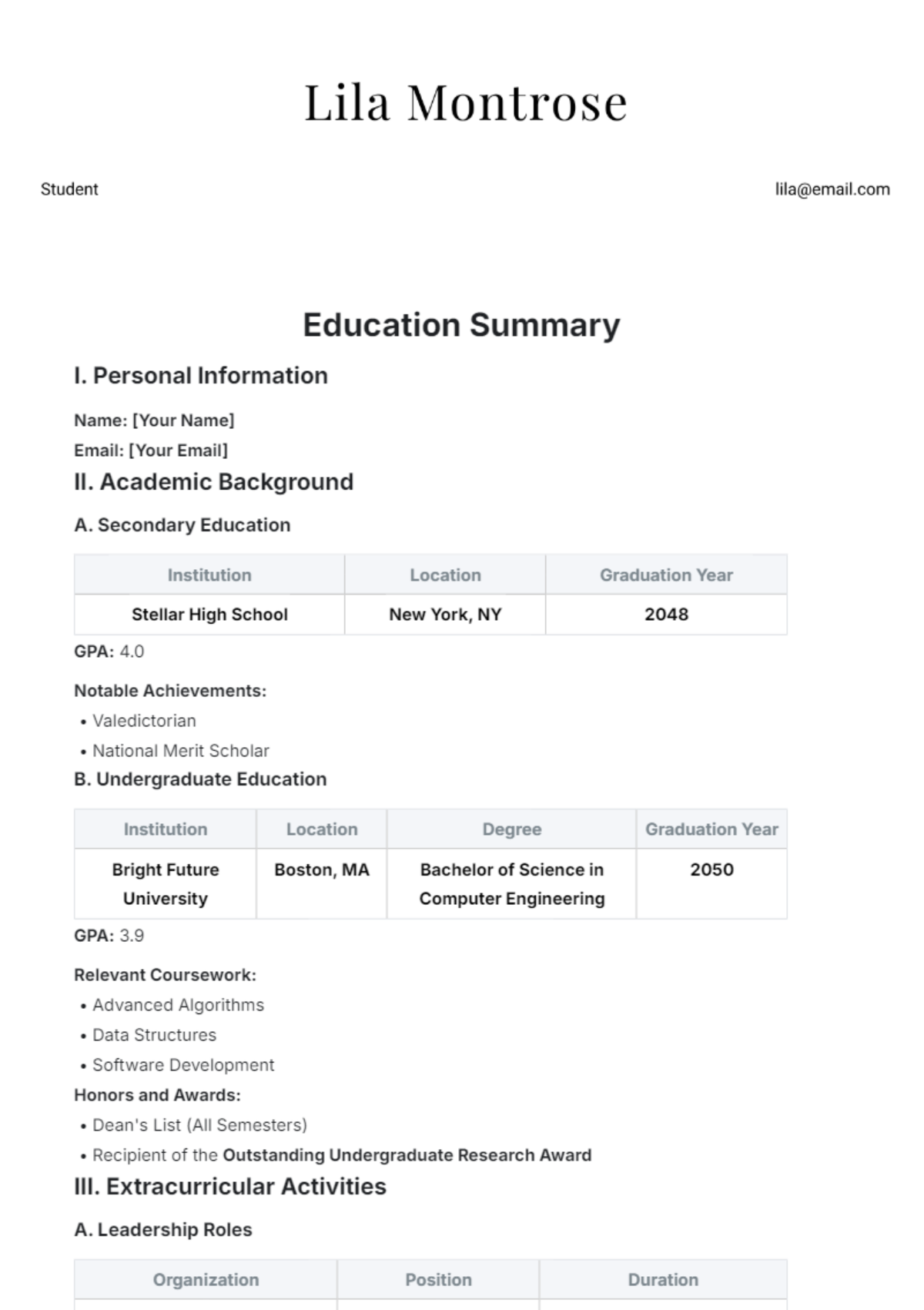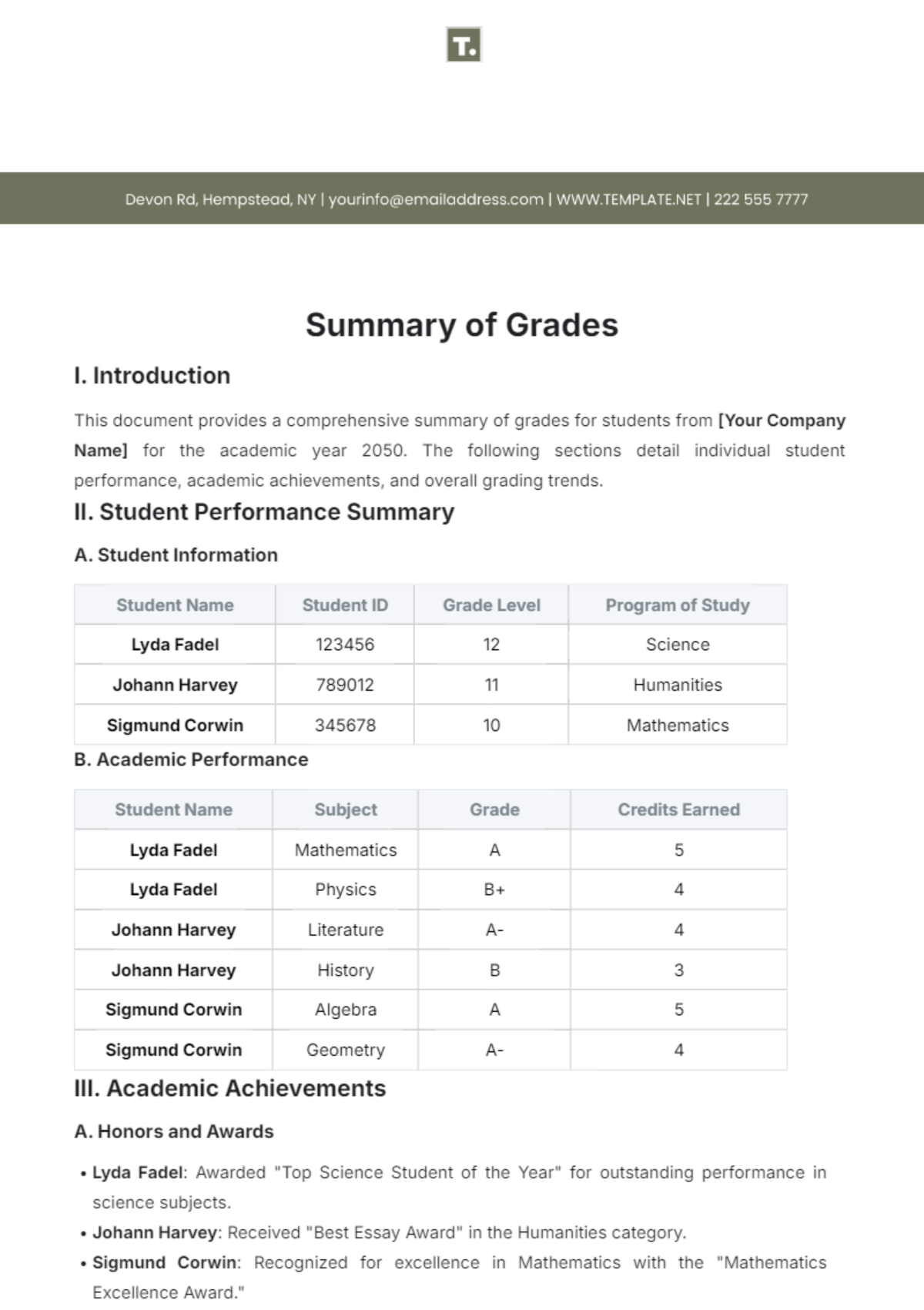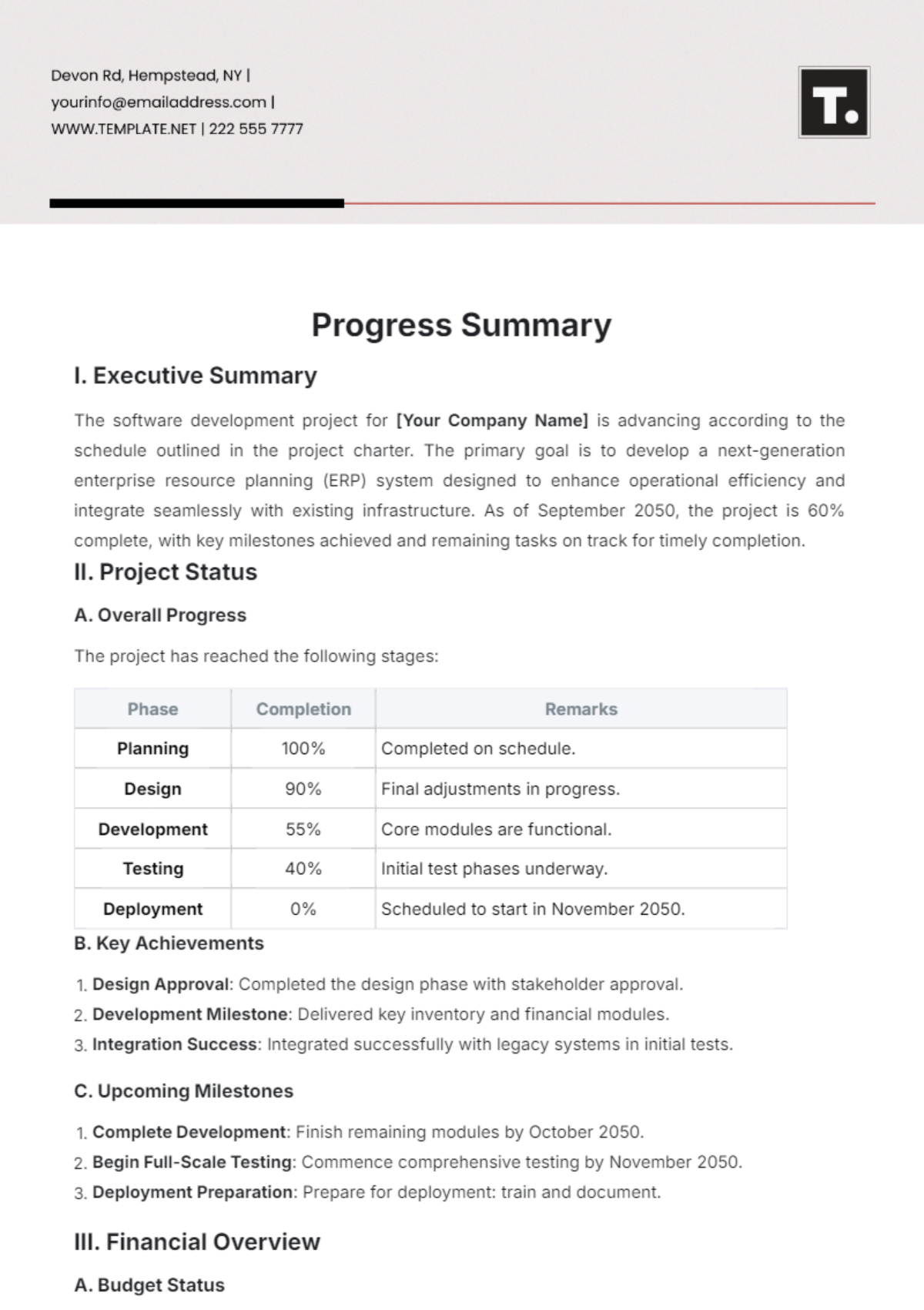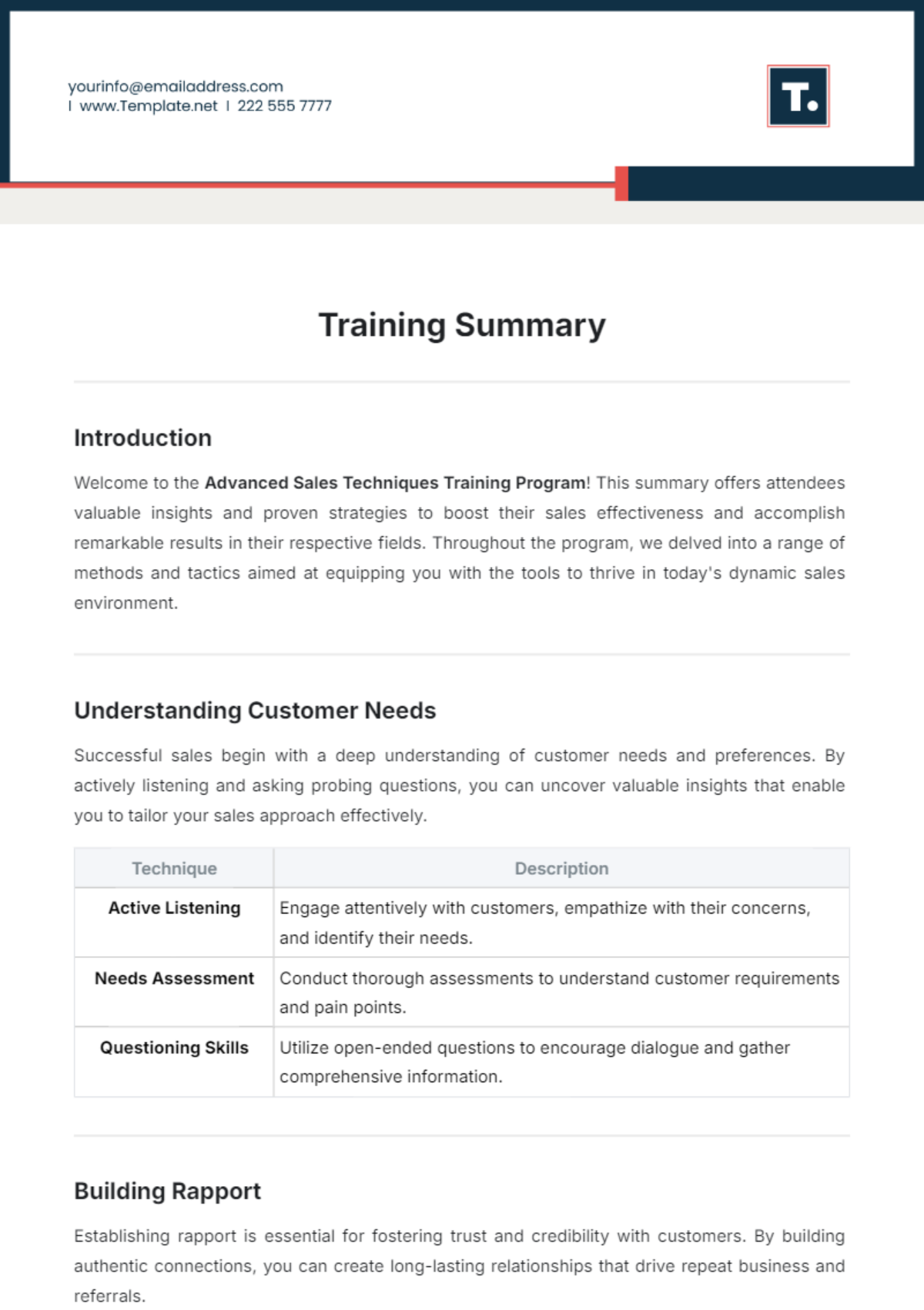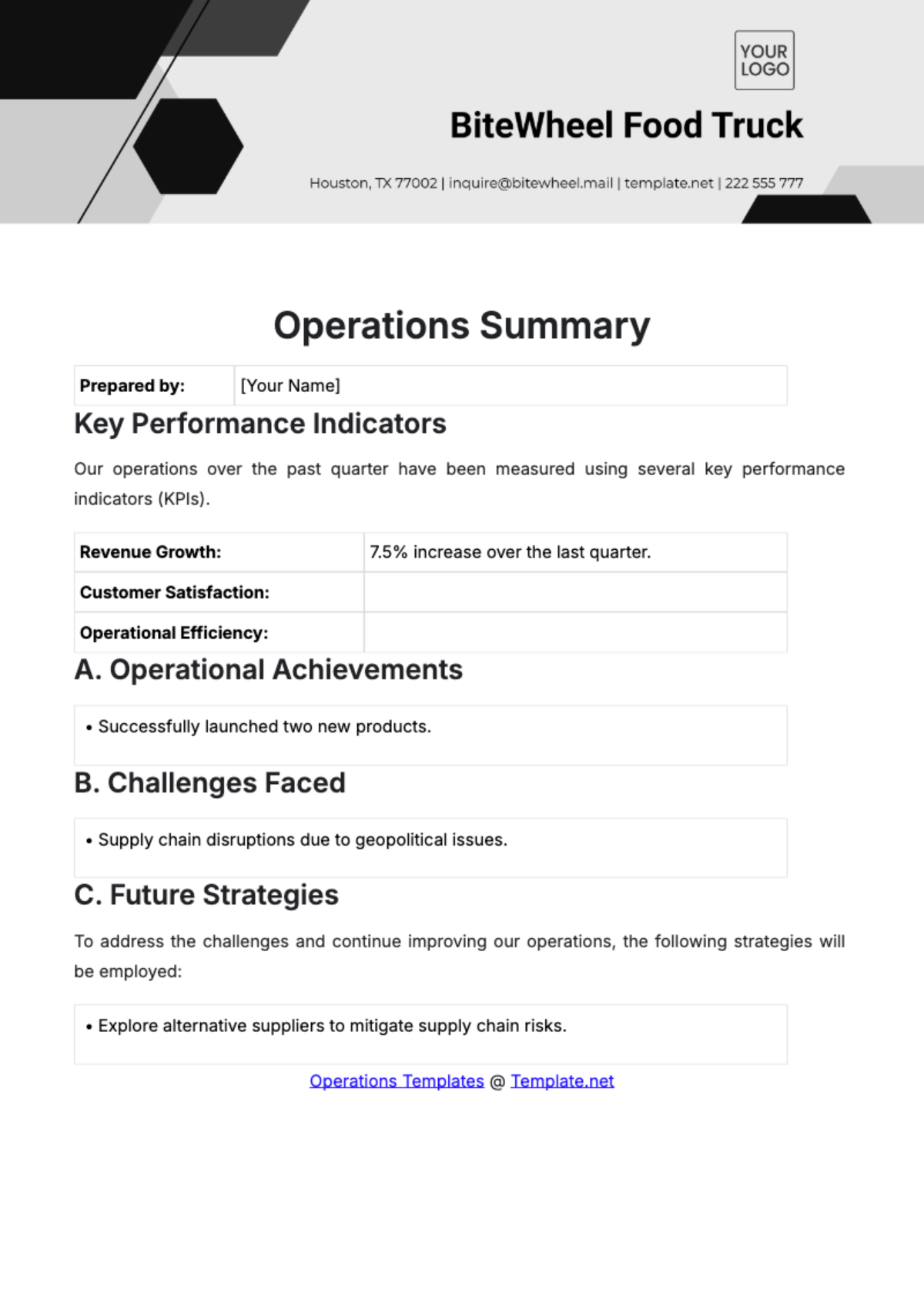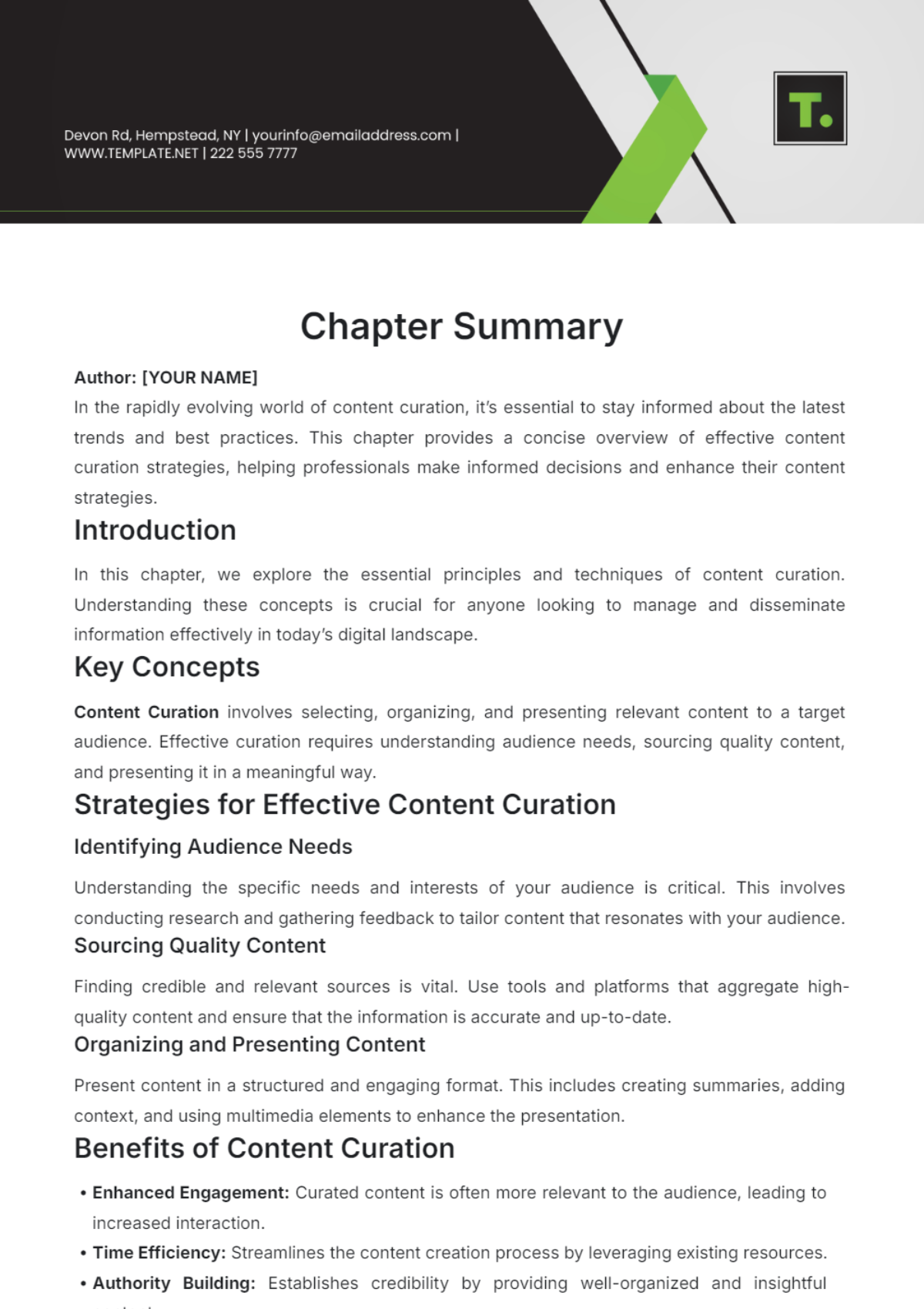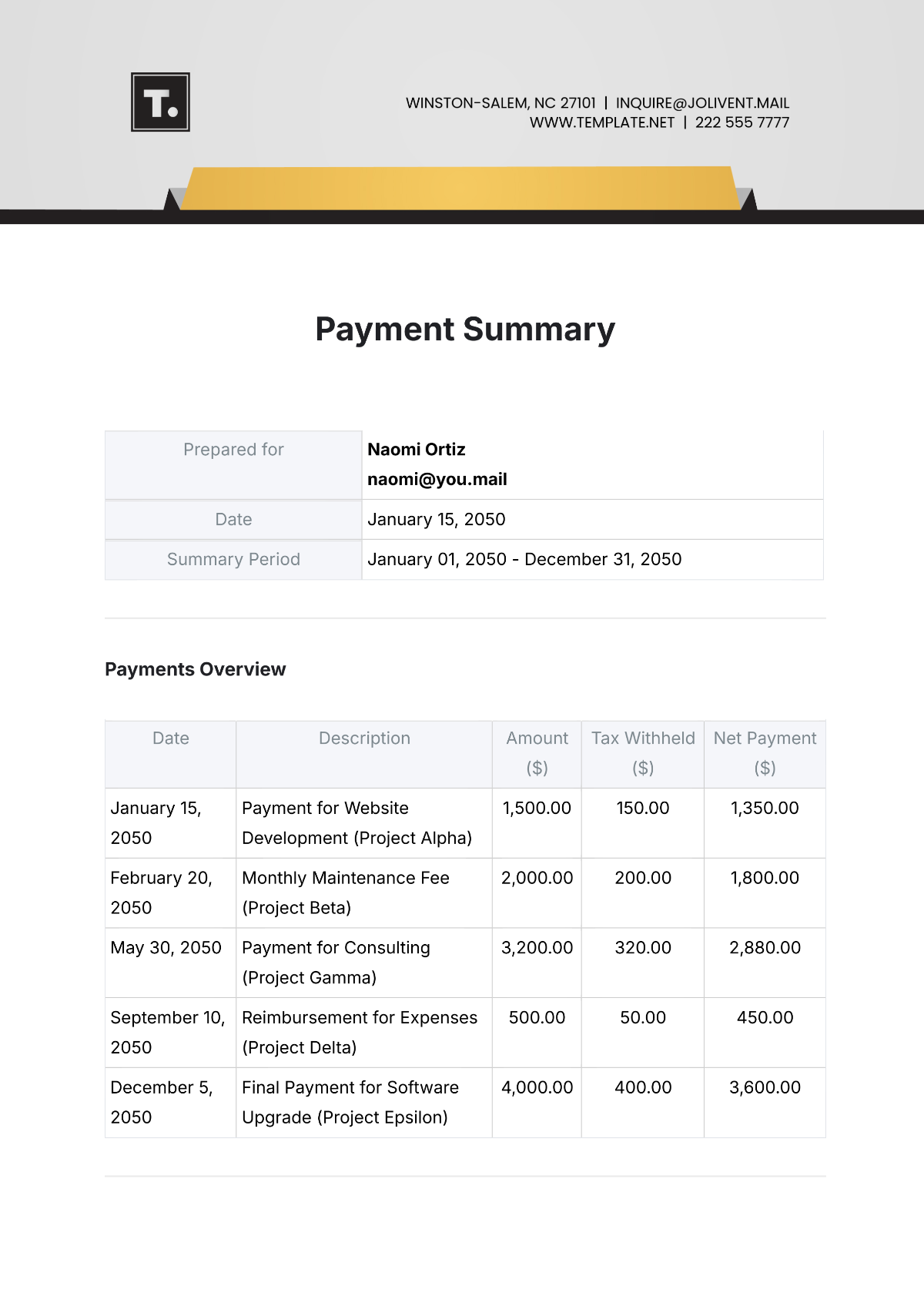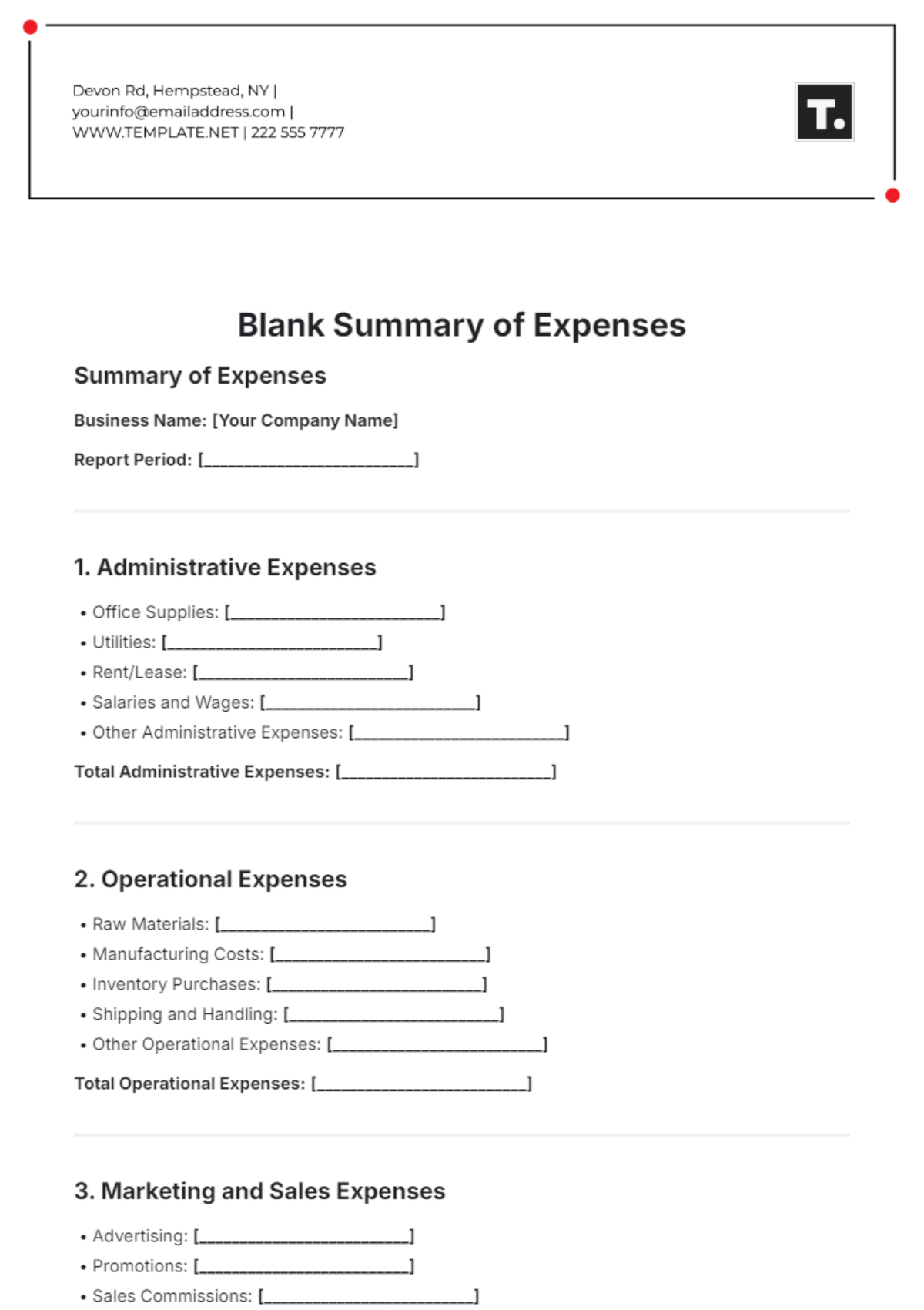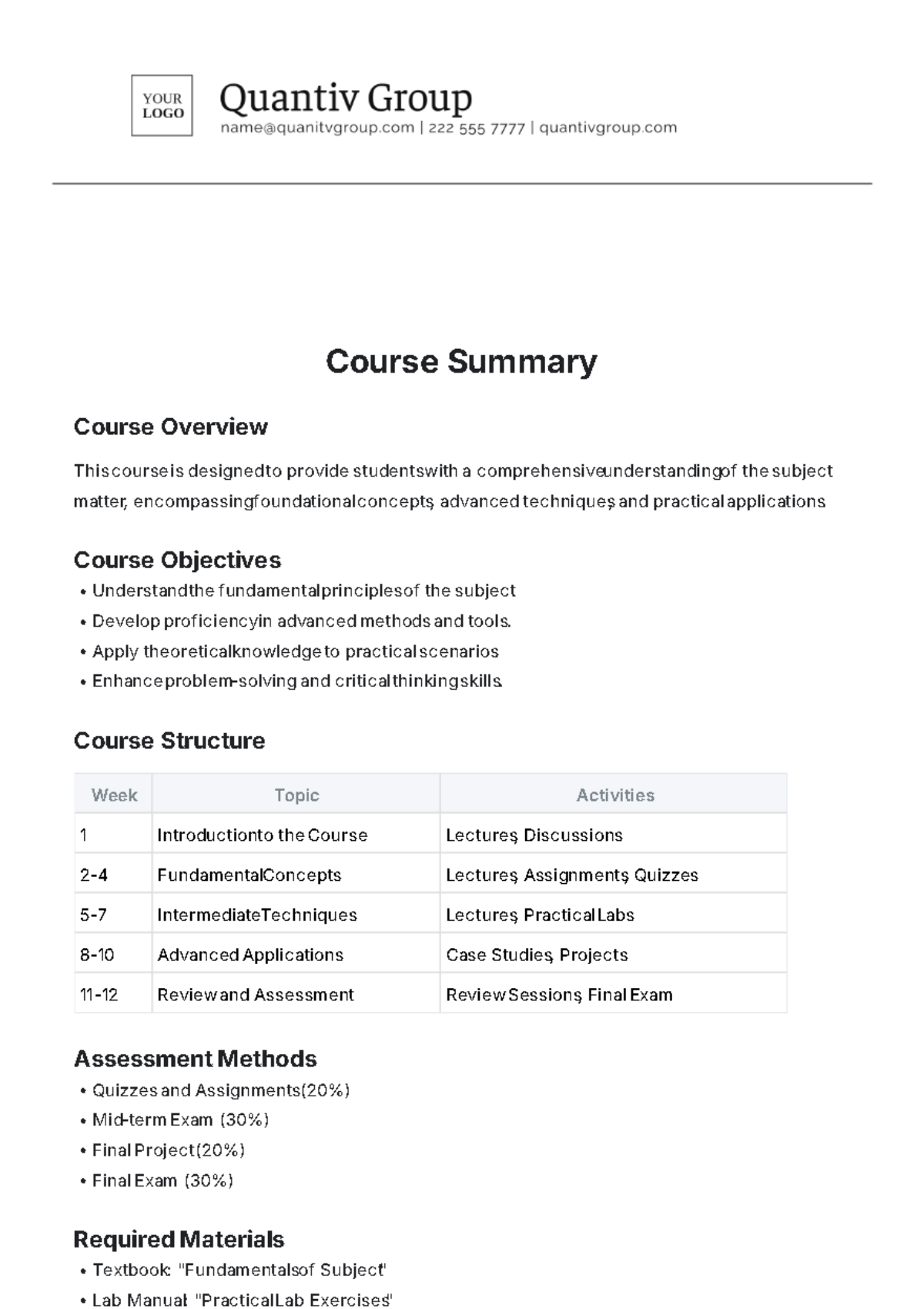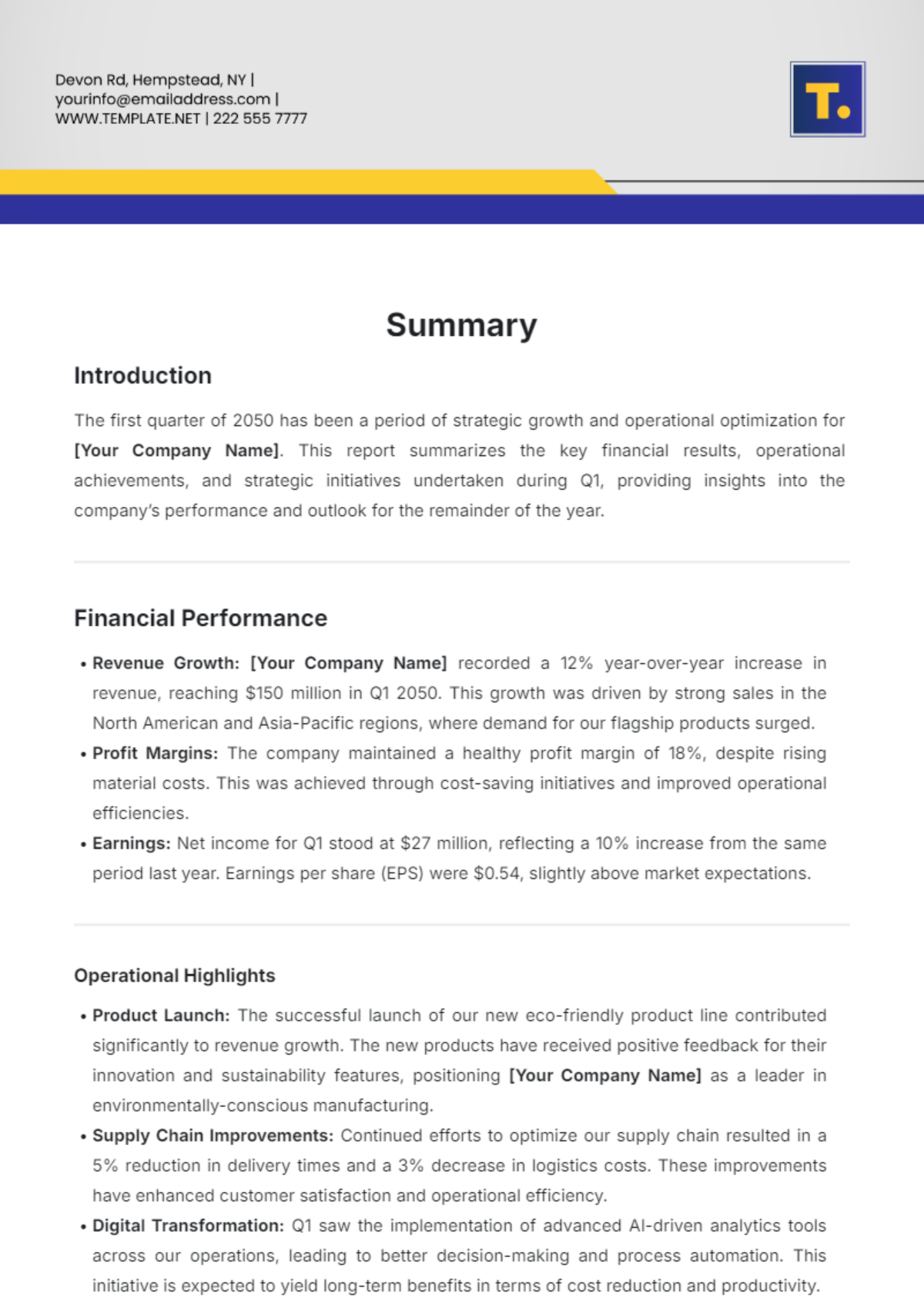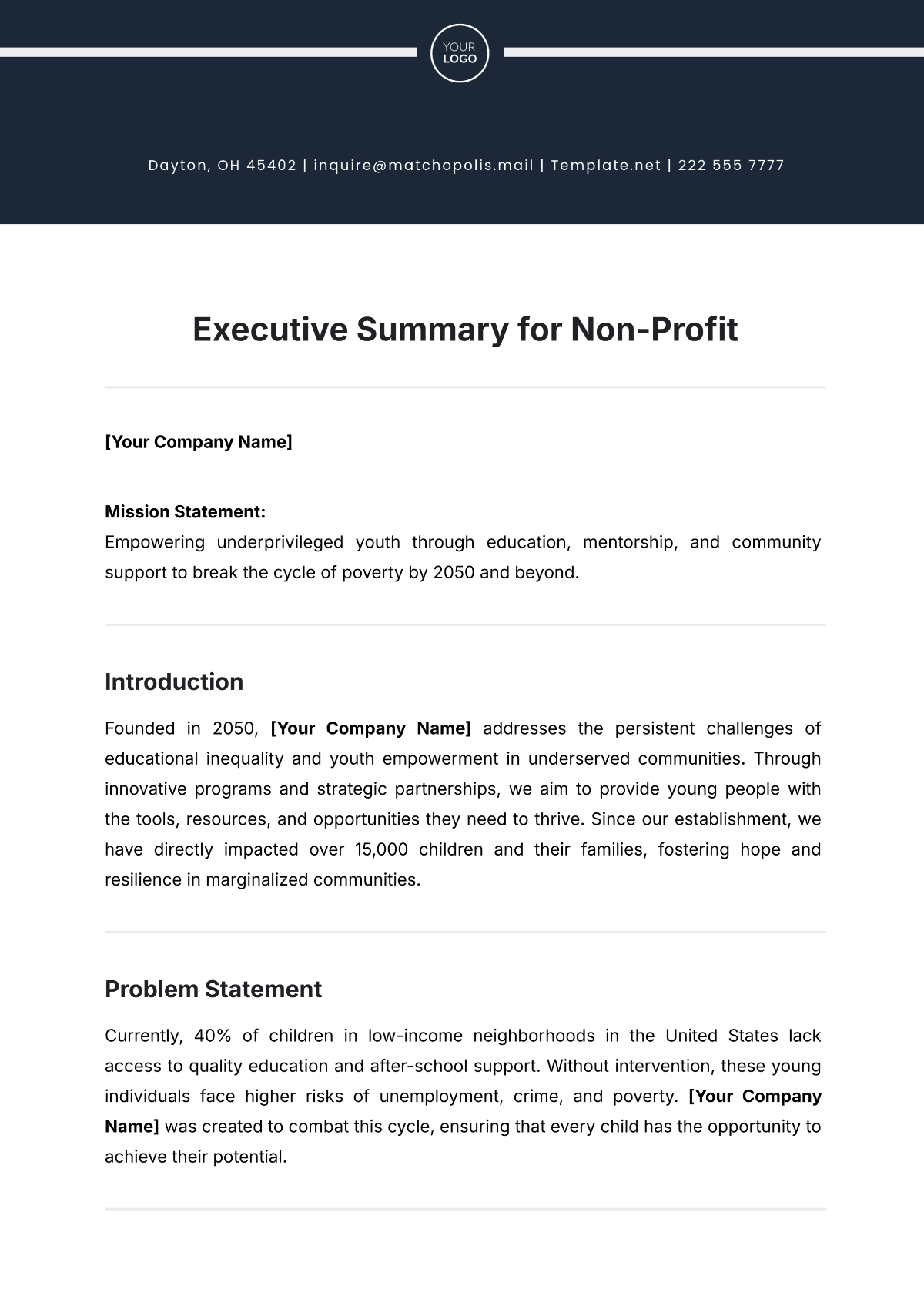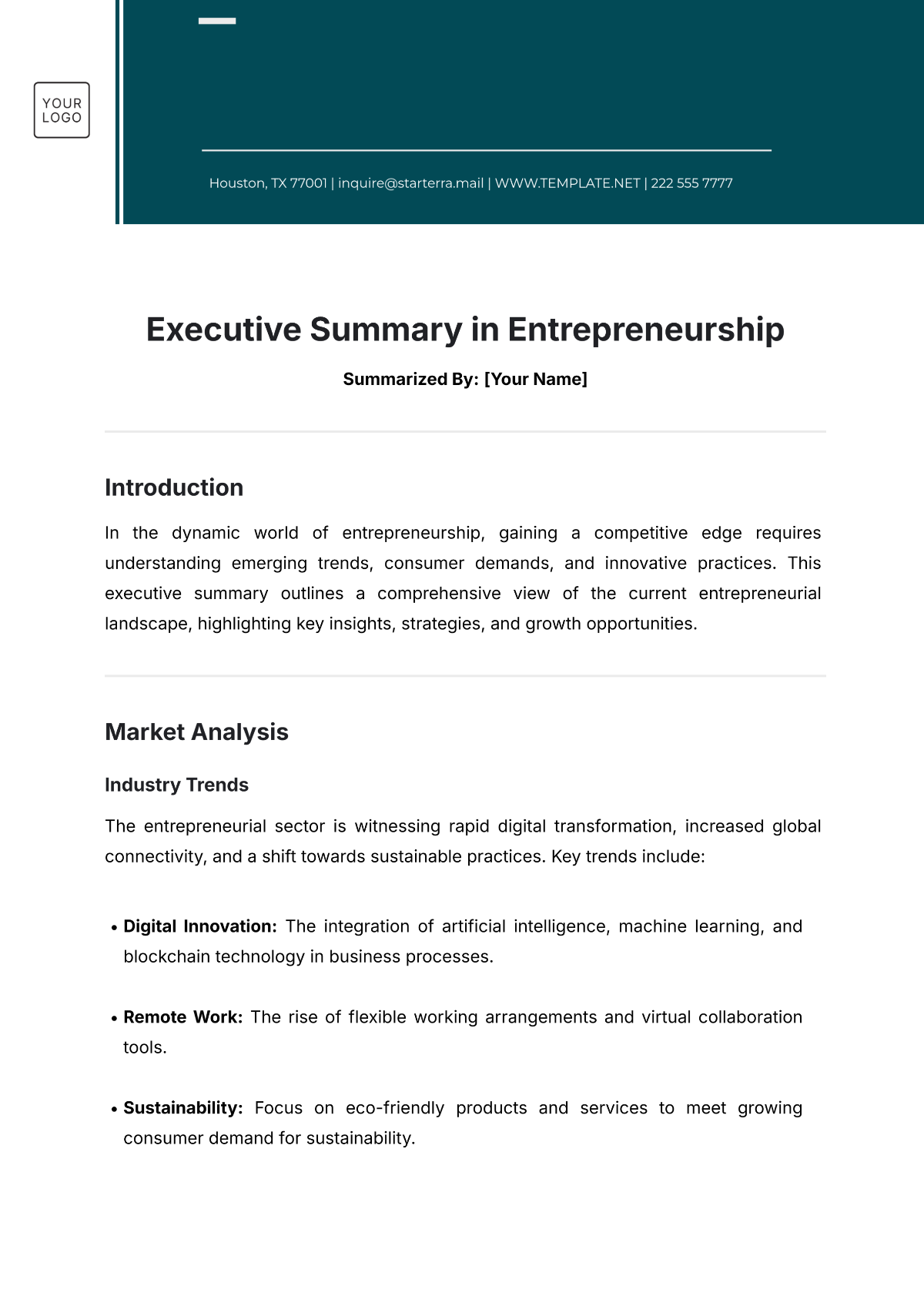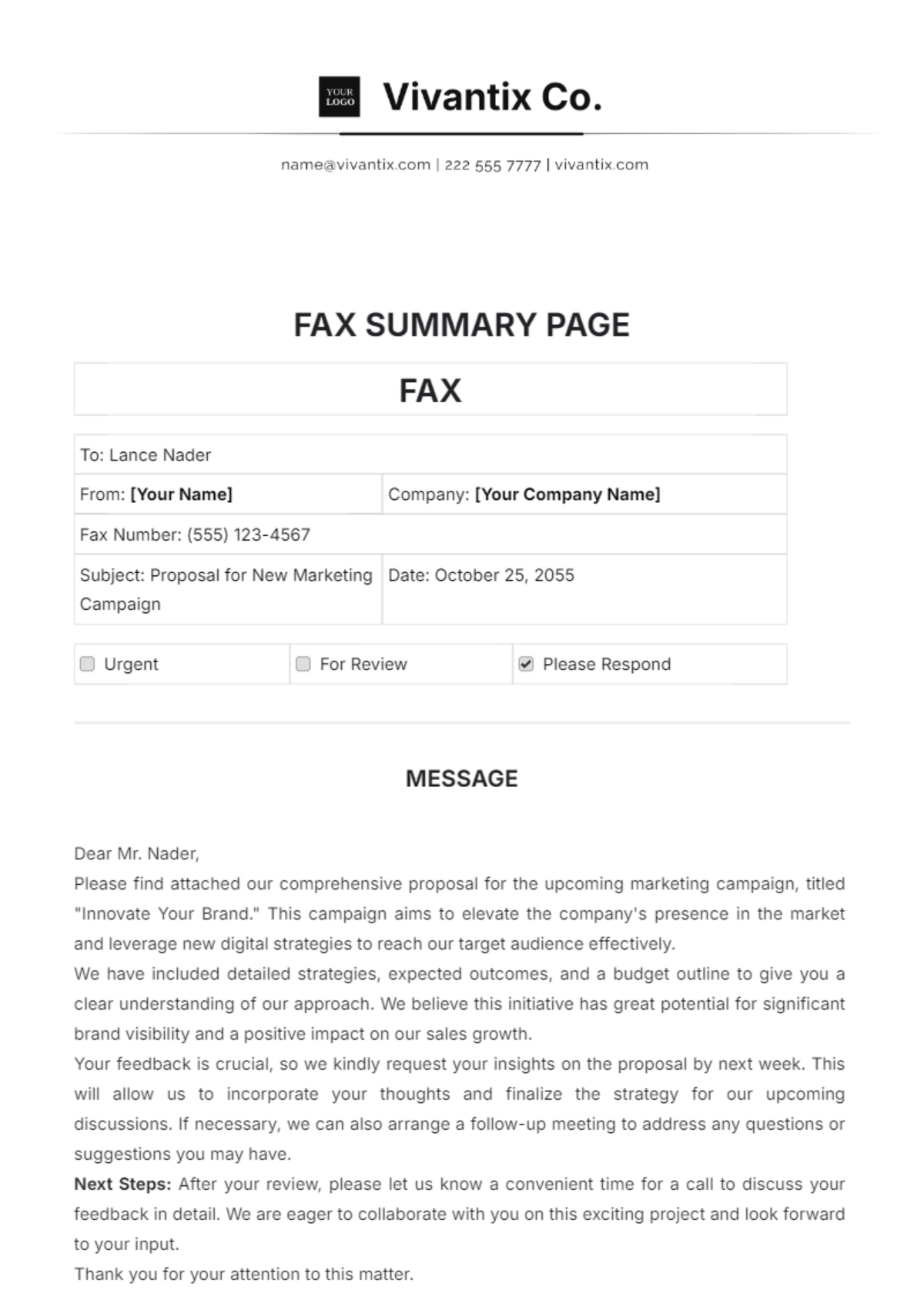Student Chapter Summary
Name: [STUDENT NAME]
School: [YOUR SCHOOL NAME]
Subject: [SUBJECT NAME]
Date: [DATE]
I. Chapter Details
The [CHAPTER TITLE] summary template is designed to assist students in comprehending and analyzing the content of chapters within textbooks or study materials. This template provides a structured framework for summarizing key points, identifying main concepts, and reflecting on the significance of the chapter in the context of their studies.
Chapter Title: [CHAPTER TITLE]
Textbook: [TEXTBOOK NAME]
Author: [AUTHOR NAME]
II. Summary
A. Introduction
The chapter [CHAPTER TITLE] introduces the topic of [TOPIC] and provides background information on the subject matter. The author outline the objectives of the chapter and present an overview of the key concepts and themes to be discussed.
B. Key Concepts
In this section, the chapter presents the main concepts and ideas relevant to [TOPIC]. These concepts may include theoretical frameworks, historical perspectives, practical applications, or case studies. The author provide explanations and examples to enhance understanding.
C. Discussion
The discussion section of the chapter delves deeper into the key concepts, providing analysis, interpretations, and insights. The author examine the significance of the concepts in relation to broader themes in the field and explore connections with other chapters or topics.
III. Relevance to Studies
A. Integration with Course Material
This section explores how the chapter aligns with the themes, concepts, and theories covered in the students' coursework. Students reflect on the connections between the chapter's content and their course curriculum, identifying overlaps, discrepancies, or areas for further exploration.
B. Application to Assignments
The chapter's content has implications for students' assignments, projects, or assessments in their studies. Students consider how the concepts discussed in the chapter can be applied to their coursework and contribute to their academic development.
IV. Critical Evaluation
A. Strengths
Students evaluate the strengths of the chapter, highlighting its clarity of presentation, relevance to the course, and effectiveness in conveying key concepts. They discuss how the chapter enhances their understanding of the subject matter and facilitates learning.
B. Weaknesses
In this section, students critically assess any weaknesses or limitations of the chapter. This may include areas where the content is unclear, lacking in depth, or where alternative perspectives could be explored. Students consider how these weaknesses impact their learning experience.
V. Application and Reflection
A. Application to Personal Learning
Students reflect on how the insights gained from the chapter can be applied to their personal learning journey. They consider how the concepts and ideas presented in the chapter resonate with their own experiences, interests, and aspirations, and how they can integrate this knowledge into their academic and personal development.
B. Critical Reflection
In this section, students engage in critical reflection on the chapter, considering alternative perspectives, unanswered questions, or areas for further investigation. They evaluate the chapter's impact on their understanding of the subject matter, identify areas of disagreement or uncertainty, and propose strategies for further exploration or inquiry.
VI. Recommendations
A. Further Reading
Students recommend additional readings or resources that complement the content of the chapter and provide further insights into the topic. They suggest scholarly articles, books, or online resources that expand on the themes explored in the chapter and offer opportunities for deeper exploration.
B. Discussion with Peers
Encourage students to engage in discussions with their peers about the chapter. They can share their perspectives, insights, and questions, and engage in collaborative learning activities to deepen their understanding of the subject matter and broaden their perspectives.
VII. Conclusion
The [CHAPTER TITLE] summary template provides students with a valuable tool for comprehending, analyzing, and reflecting on the content of chapters within their textbooks or study materials. By engaging with the key concepts, discussing their relevance to their studies, and critically evaluating the content, students can enhance their understanding of the subject matter and develop essential skills for academic success.
Summarized By: [YOUR NAME]

